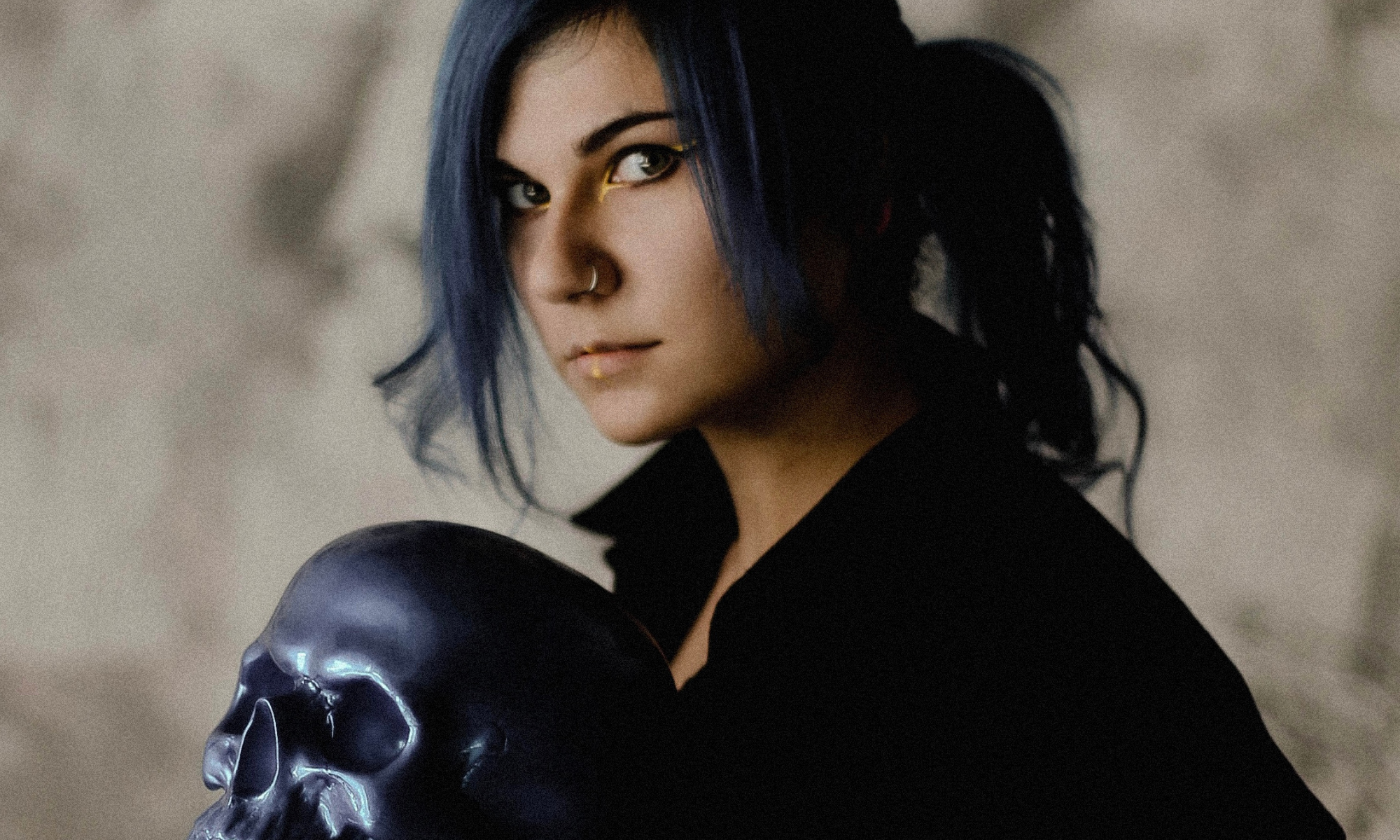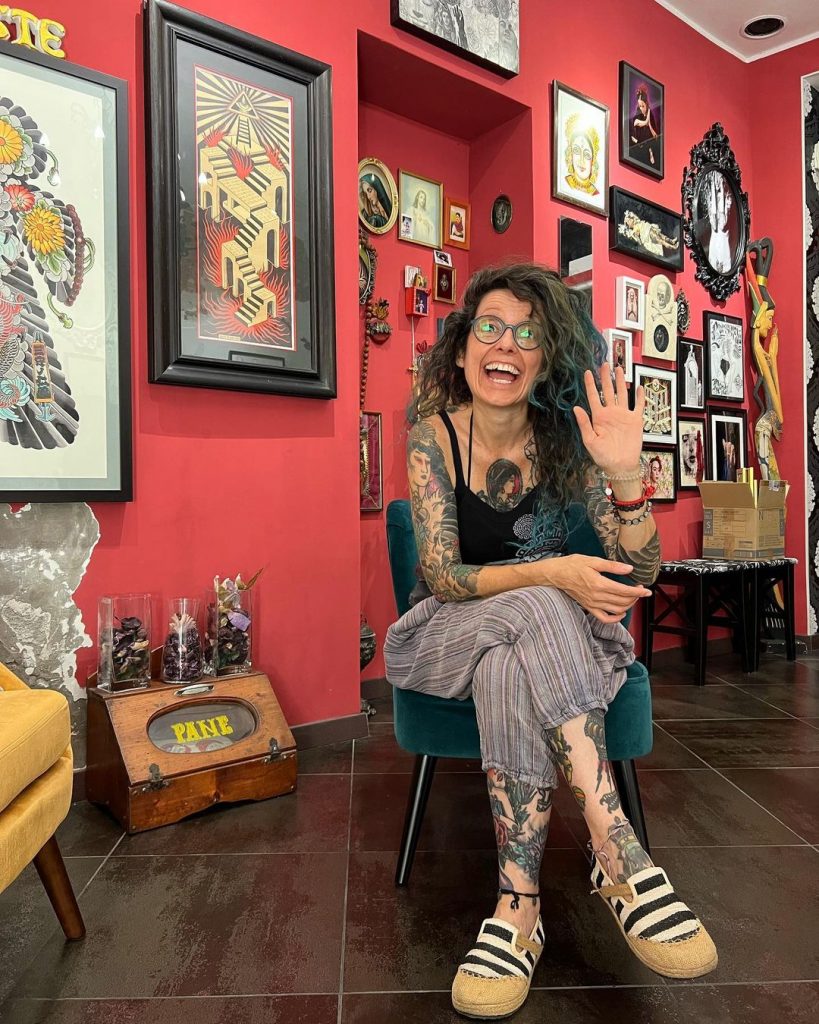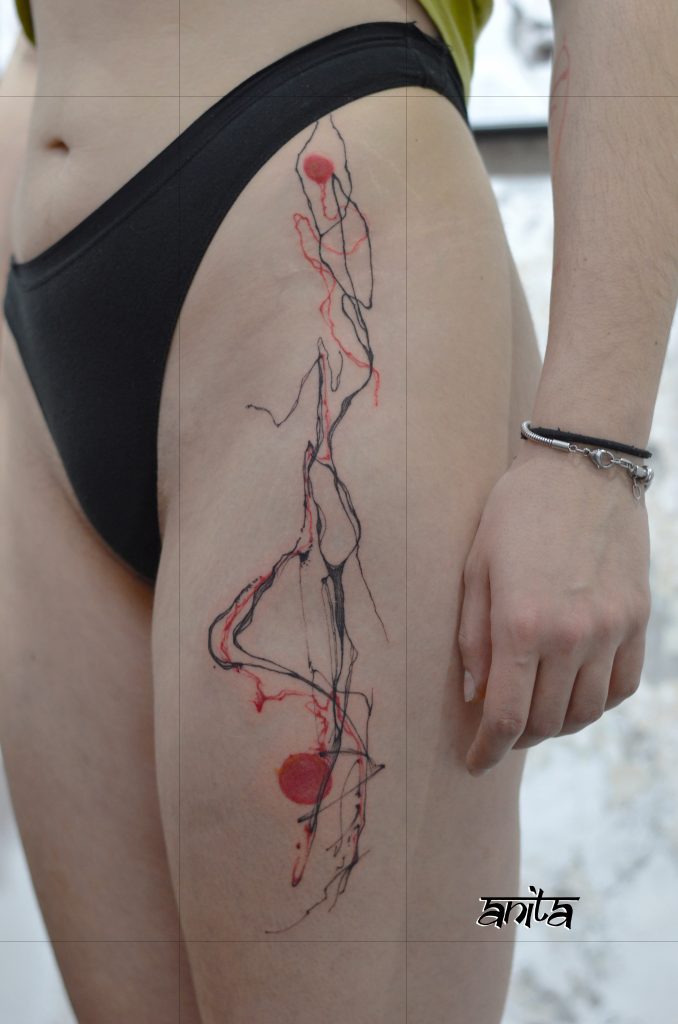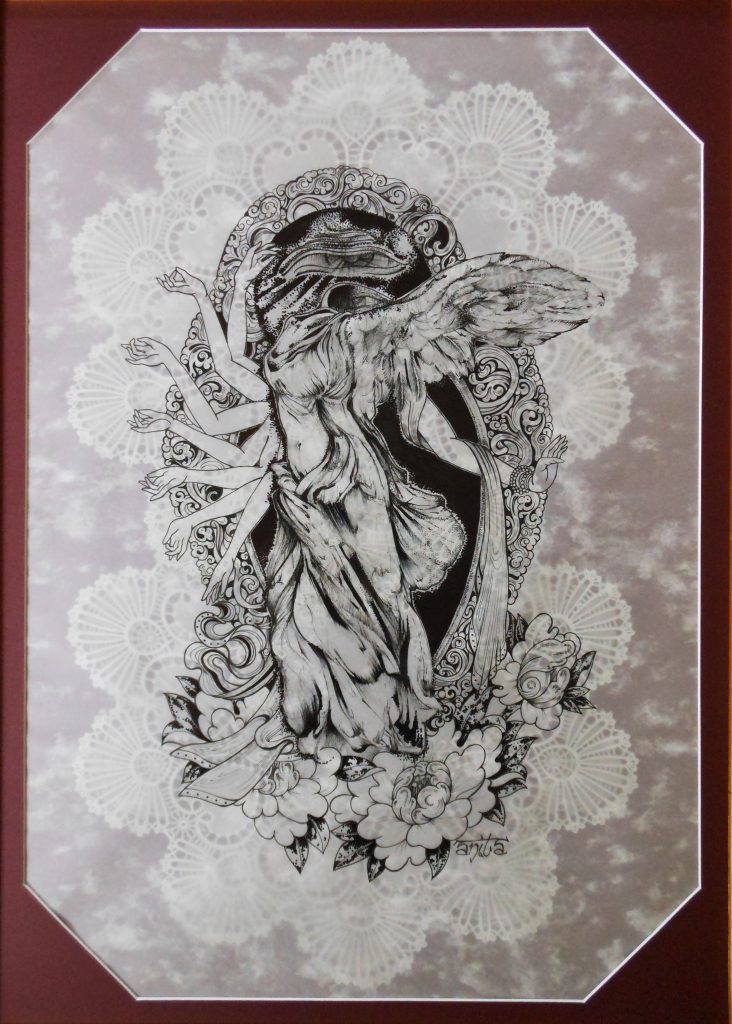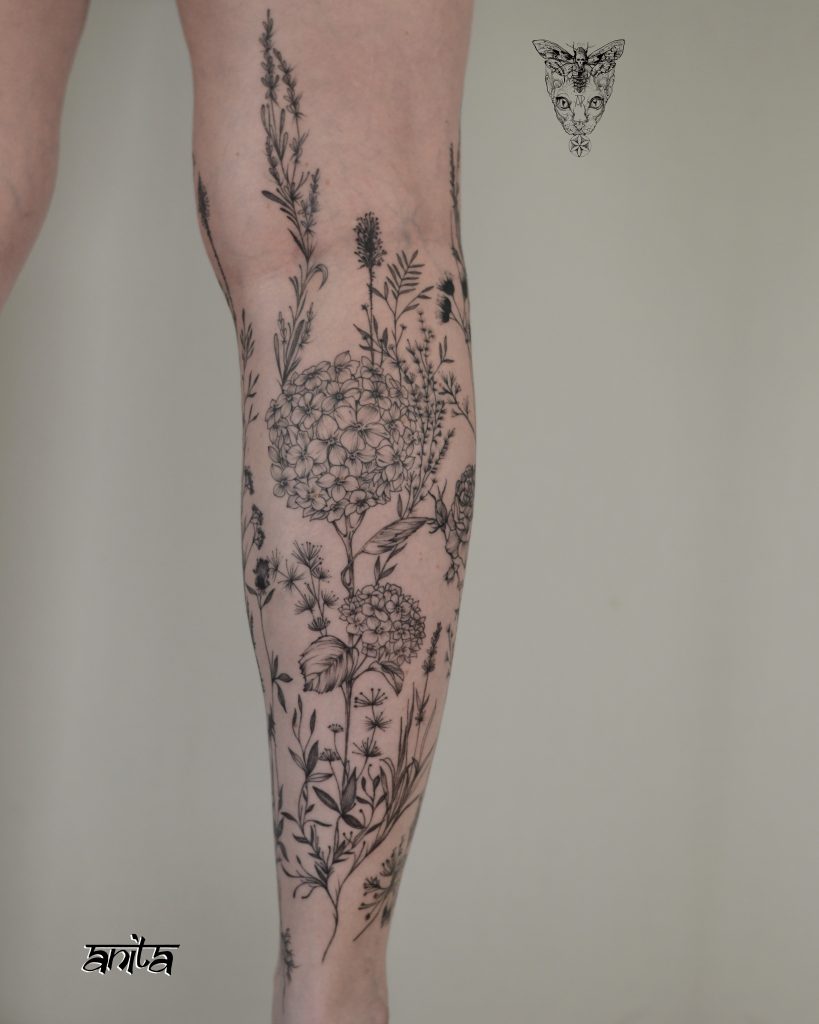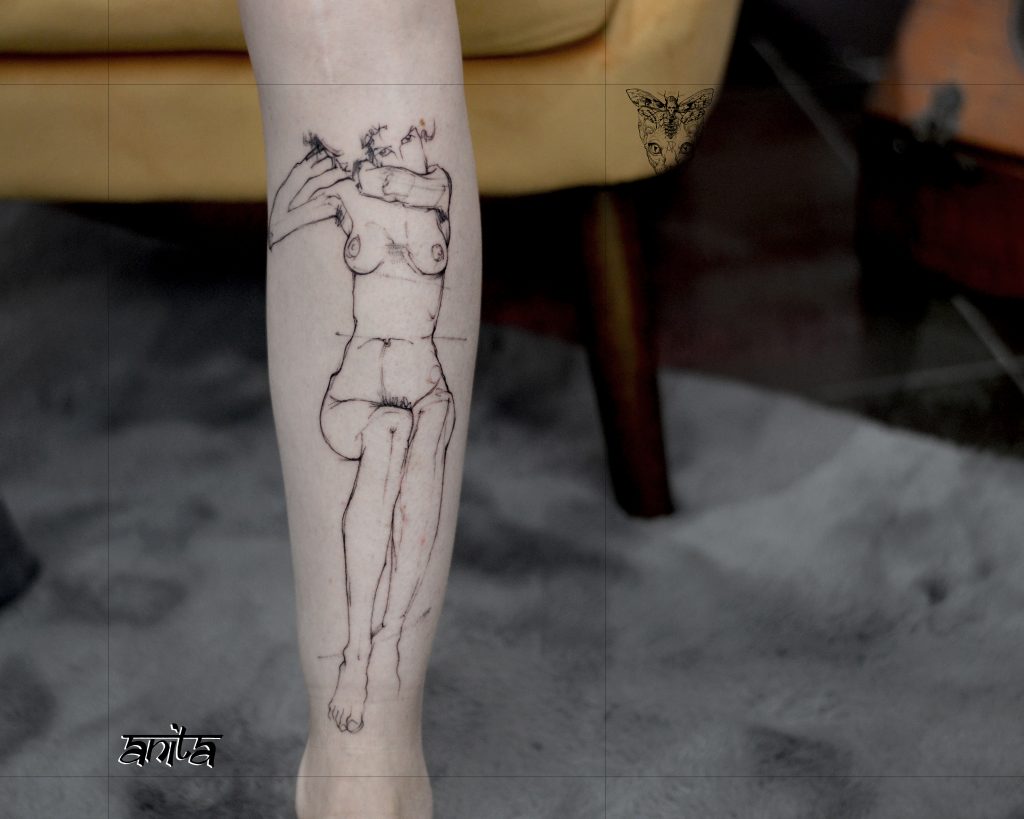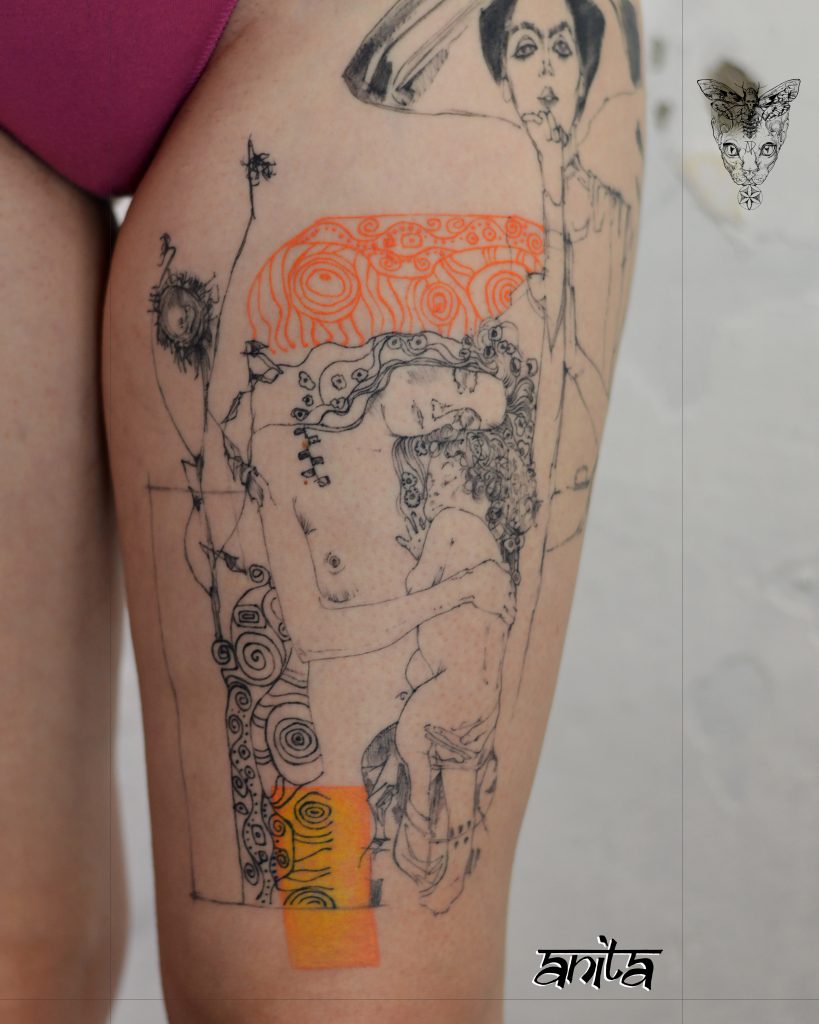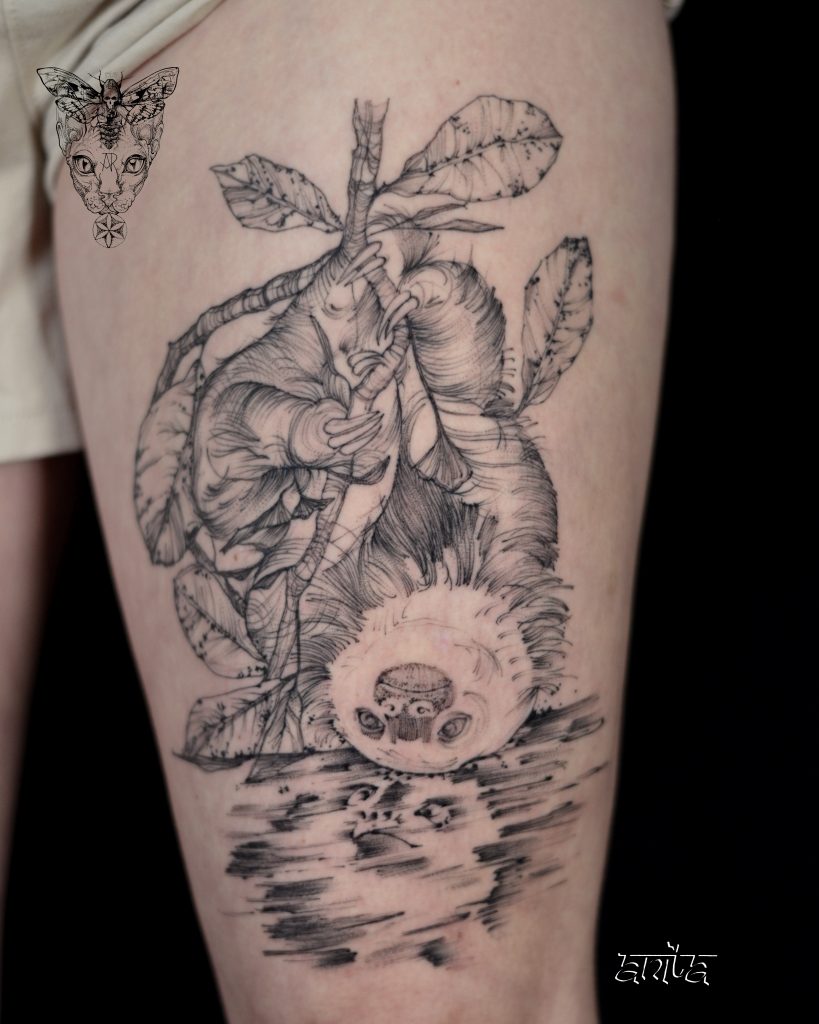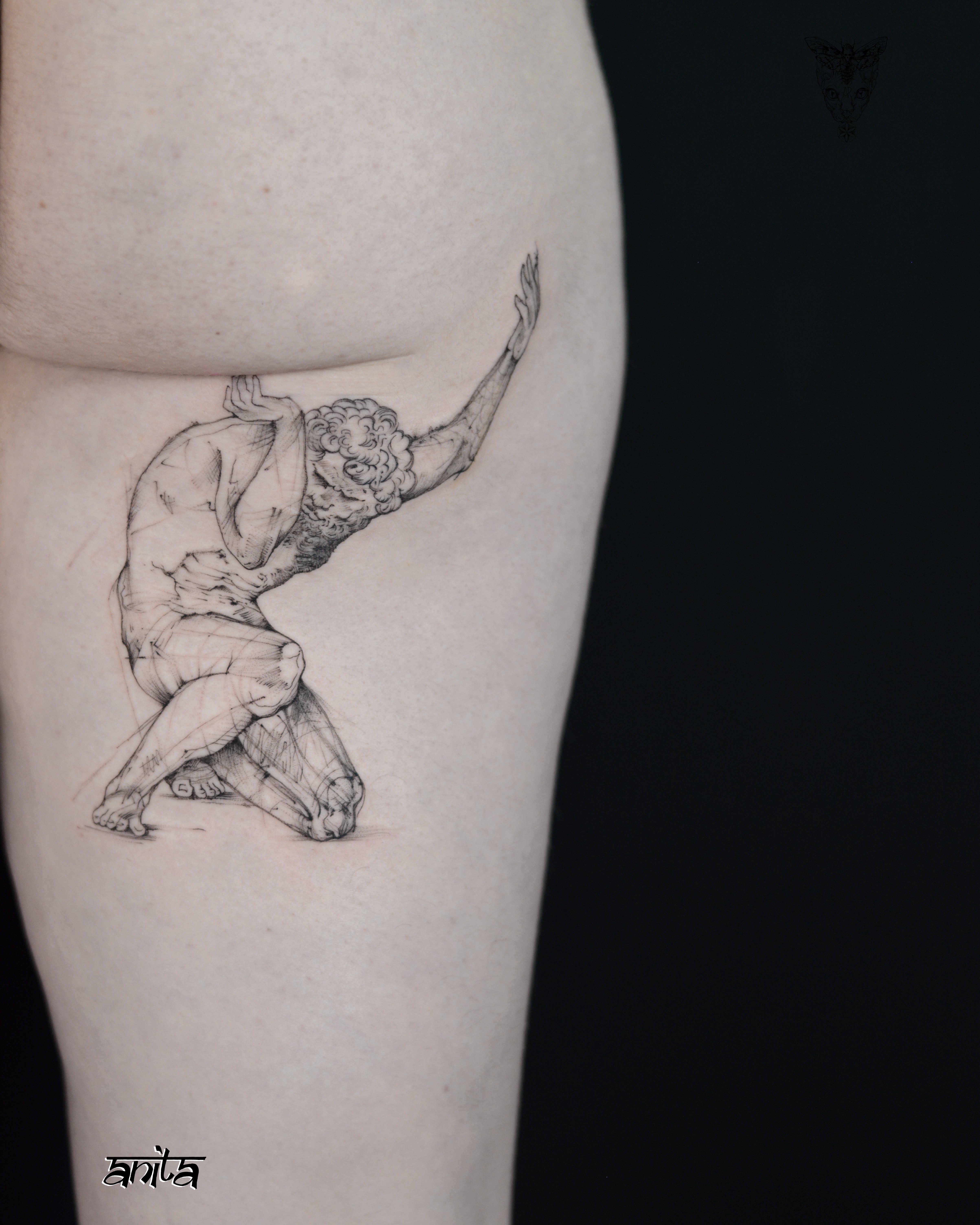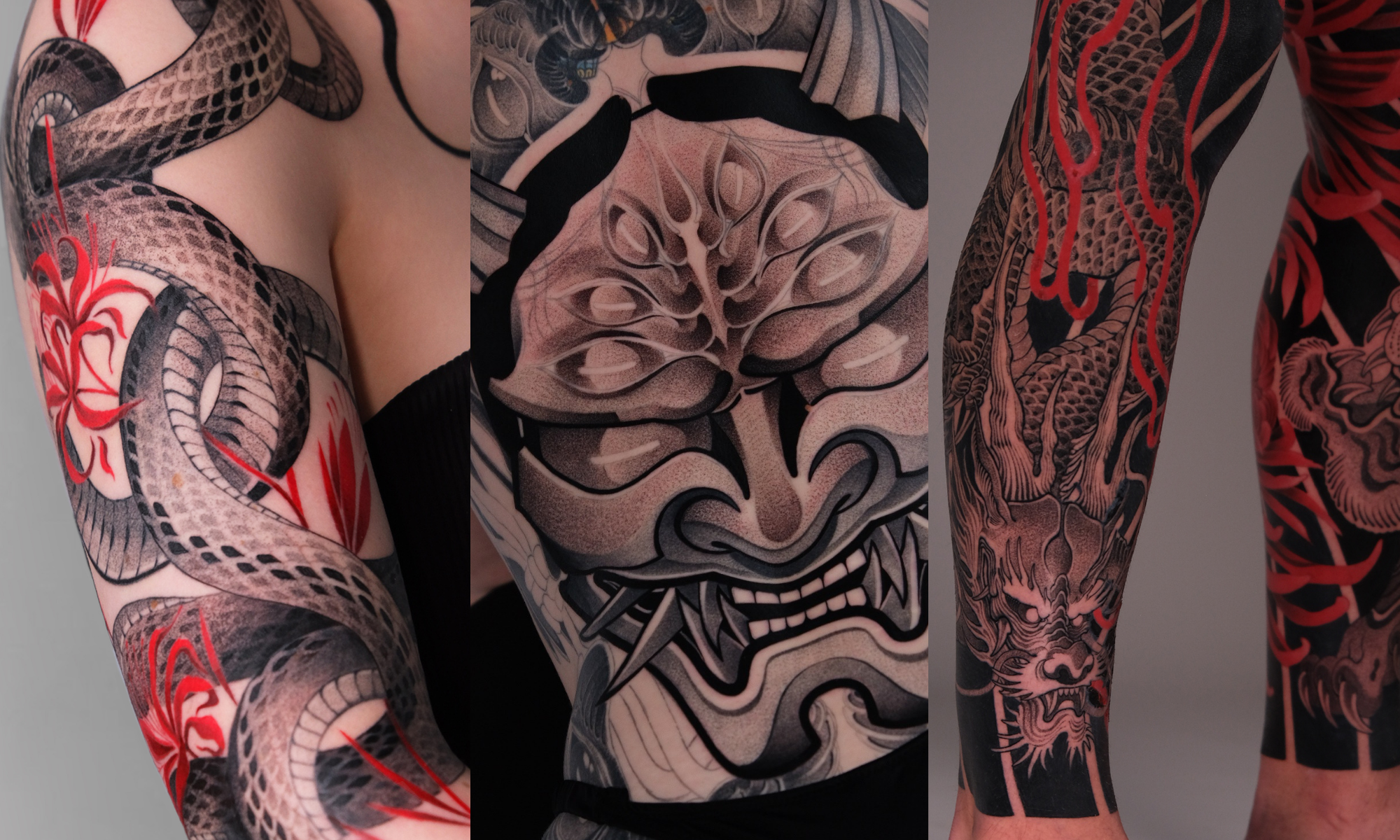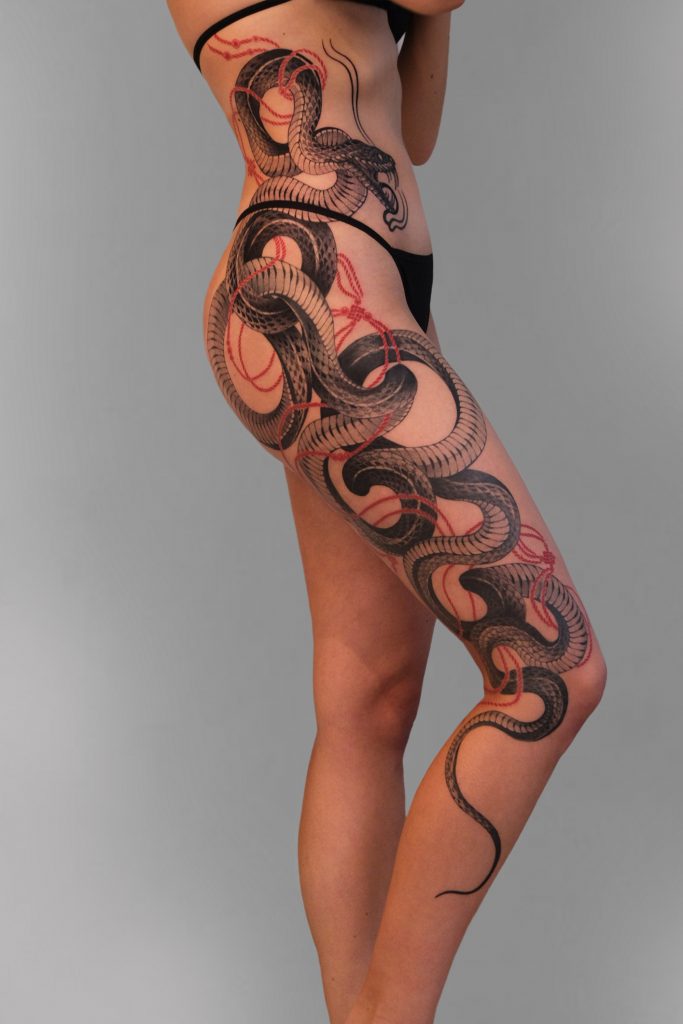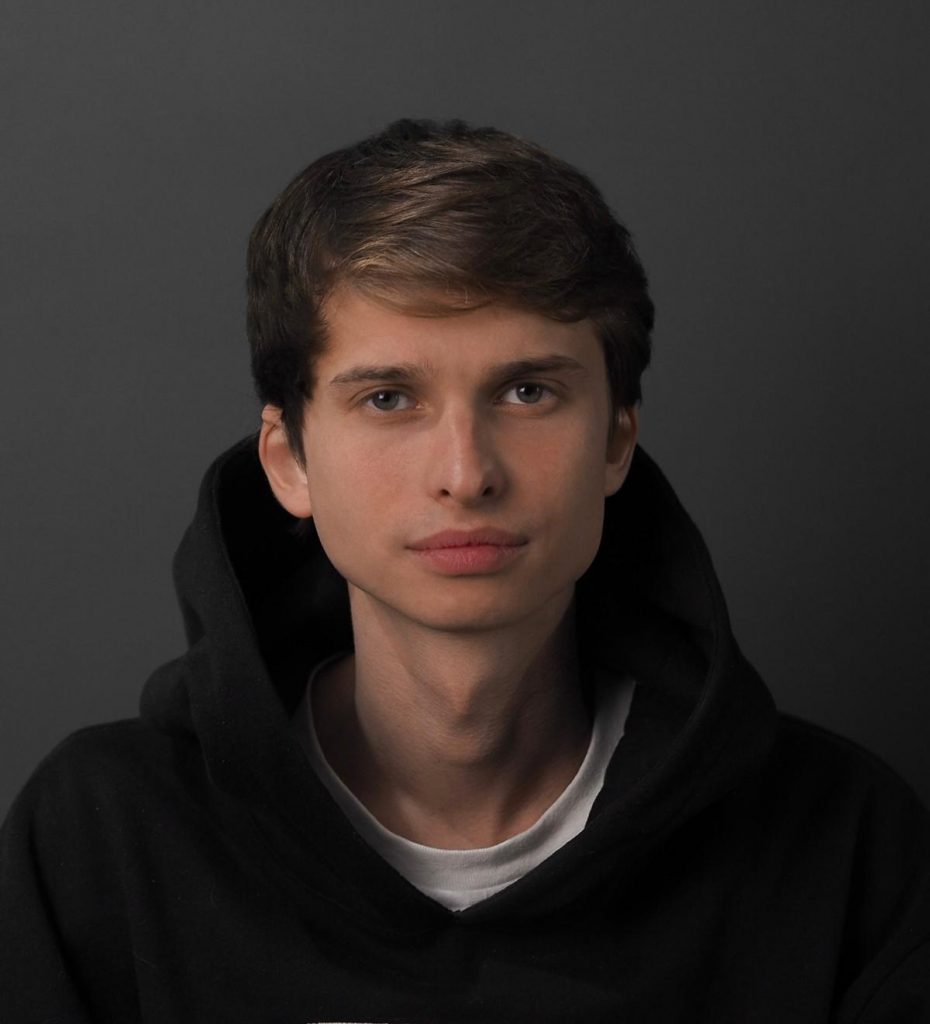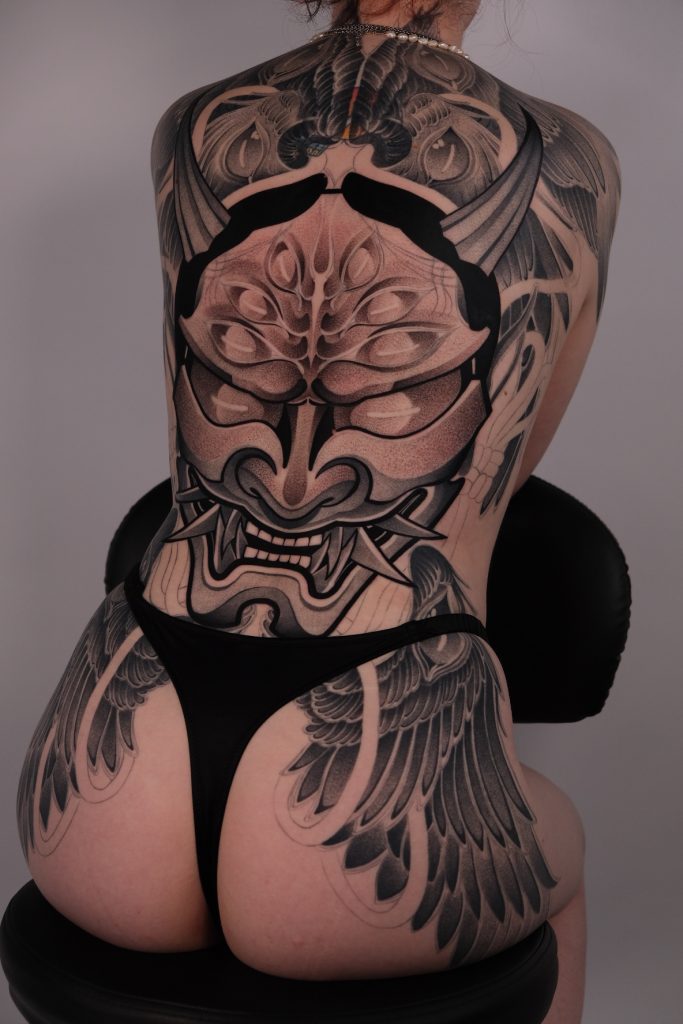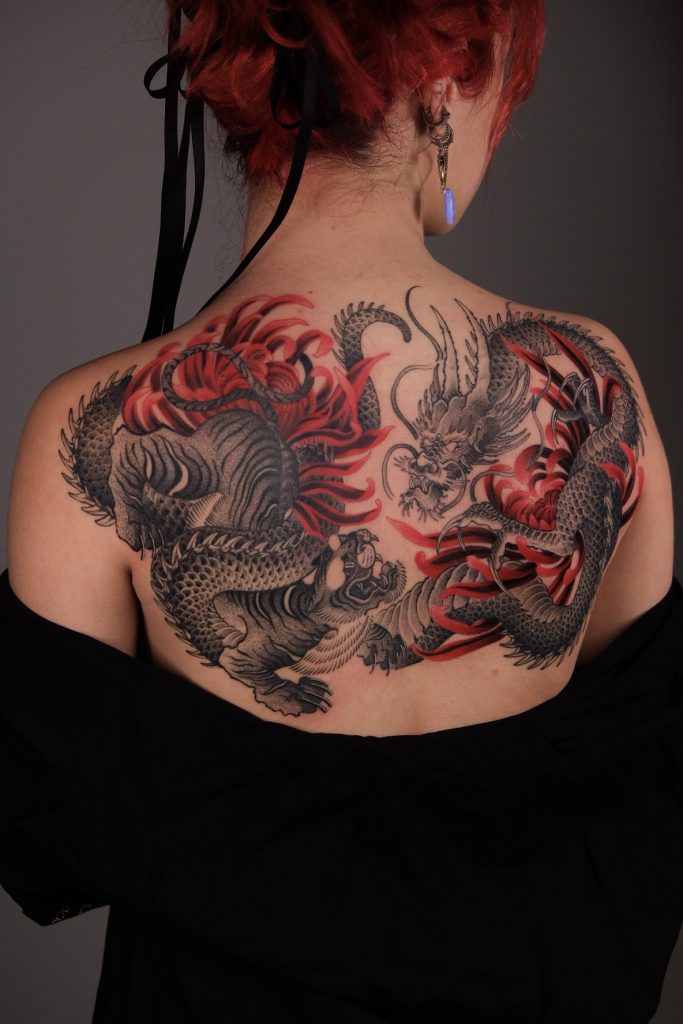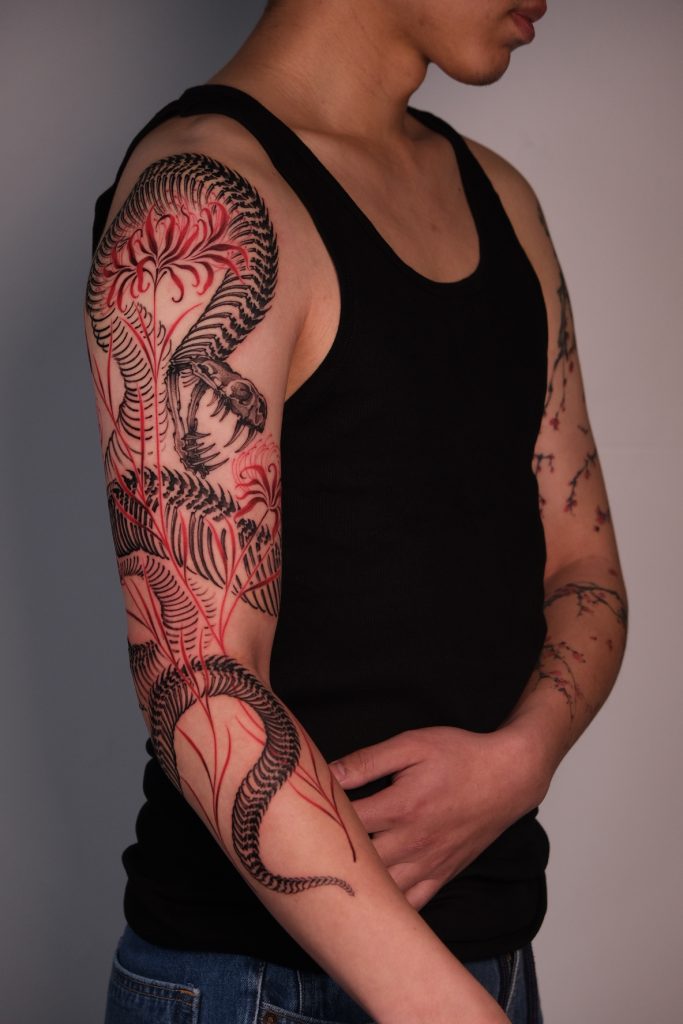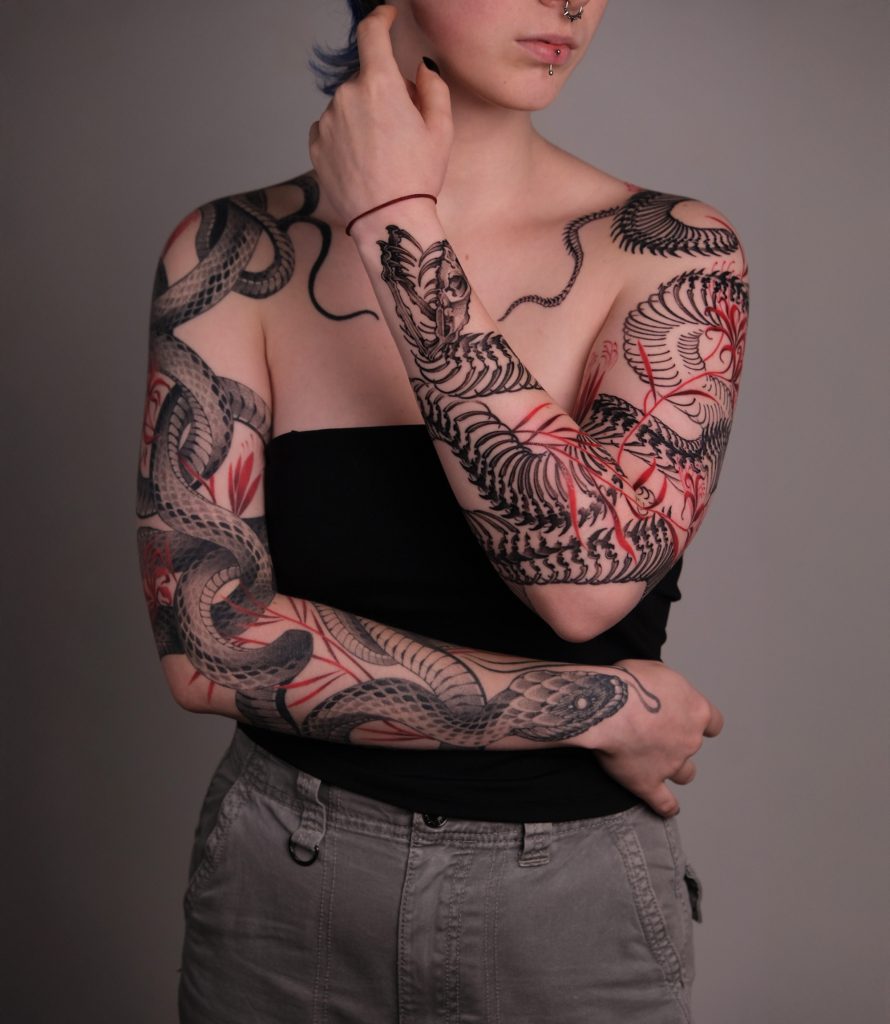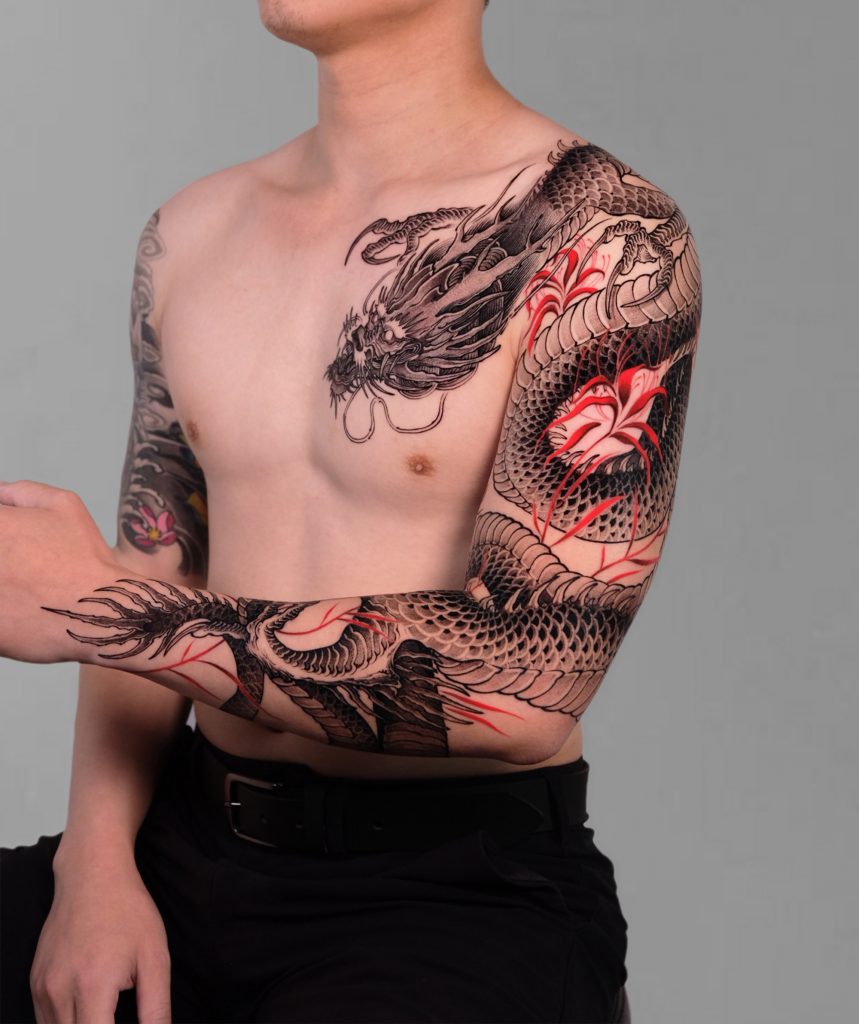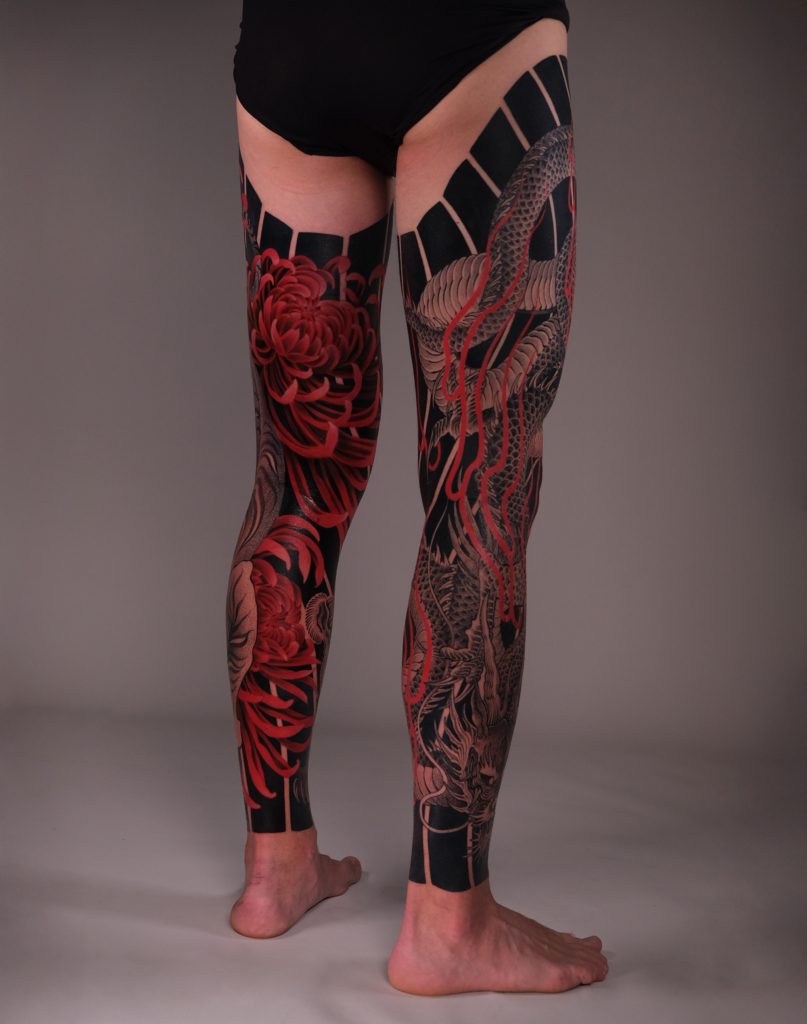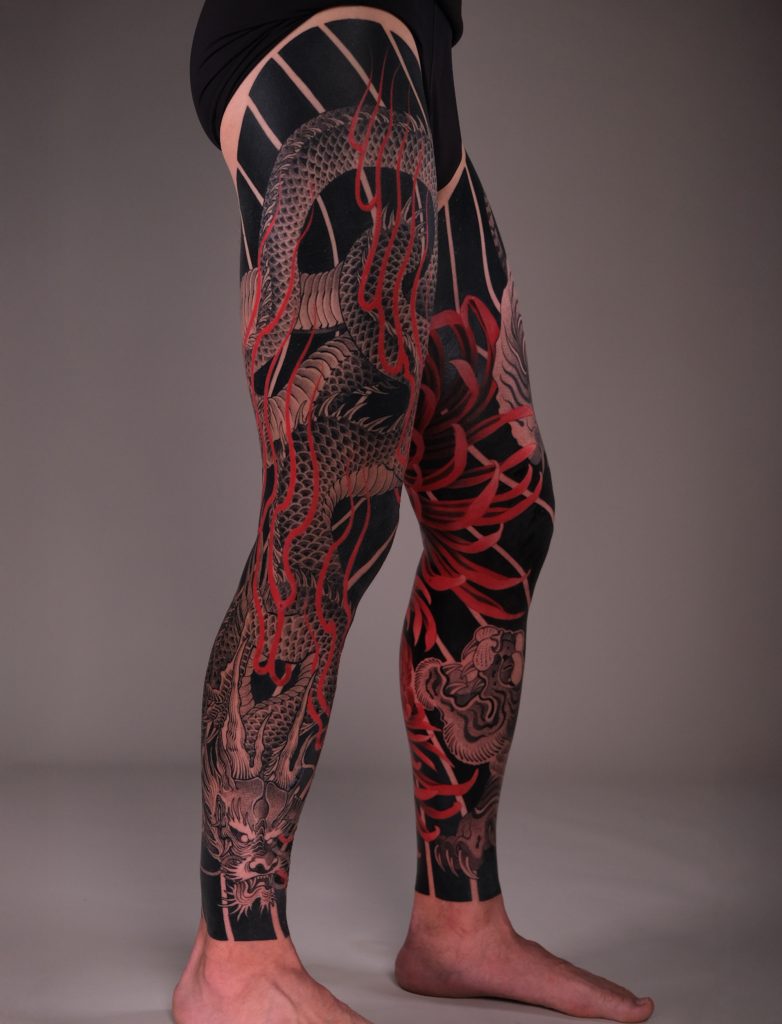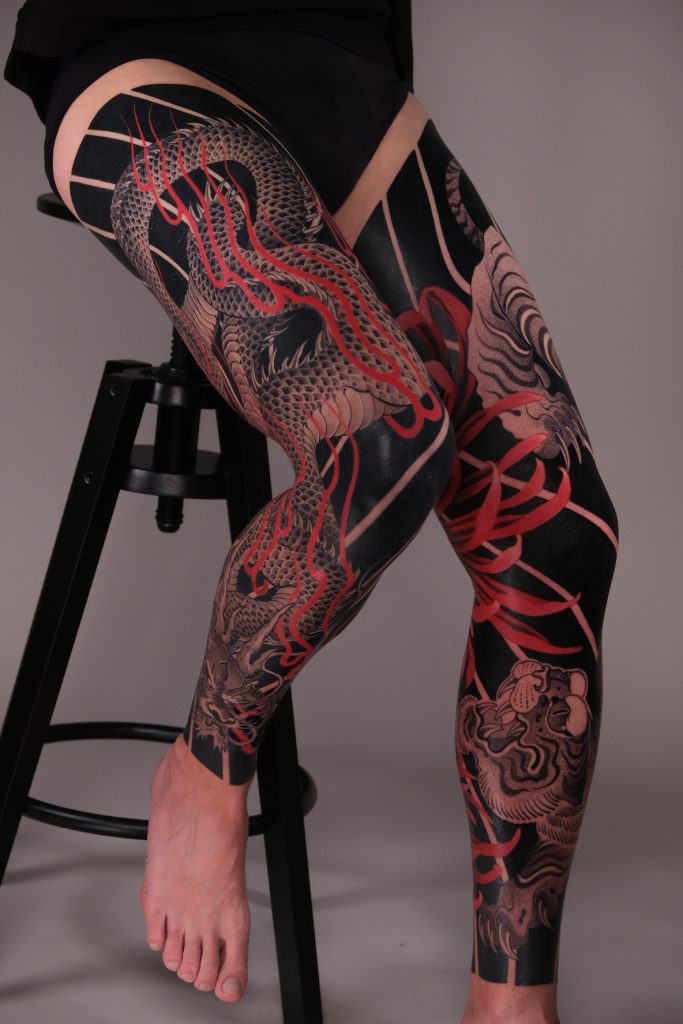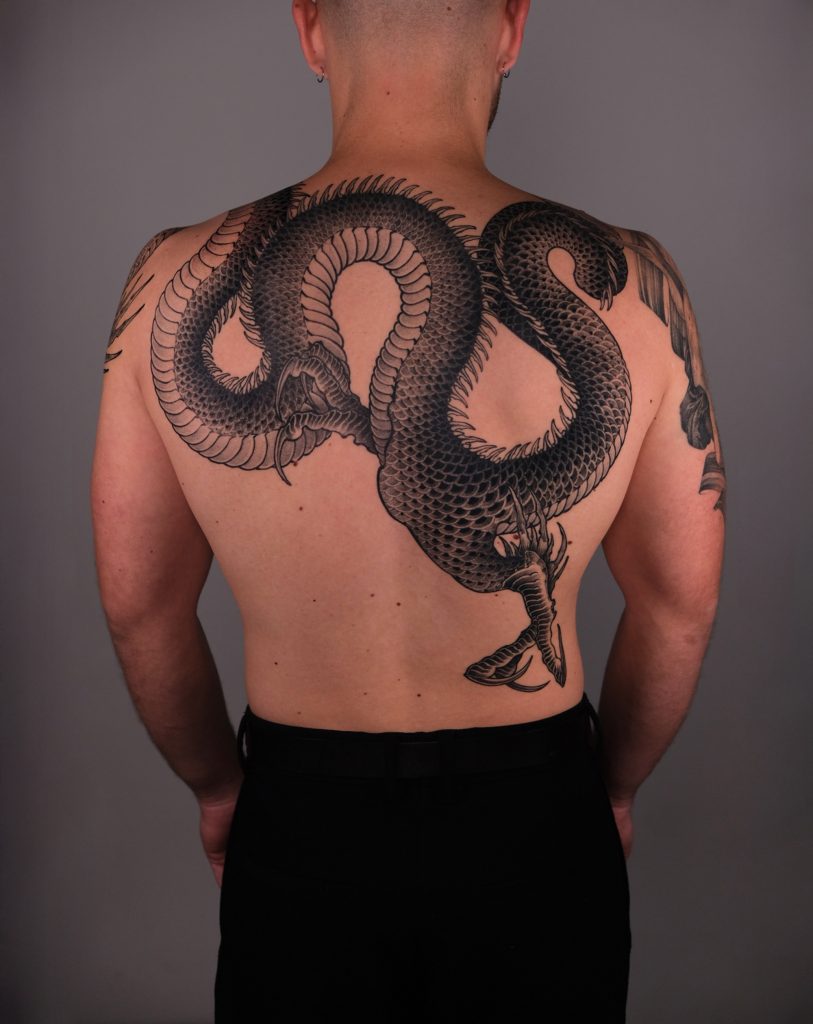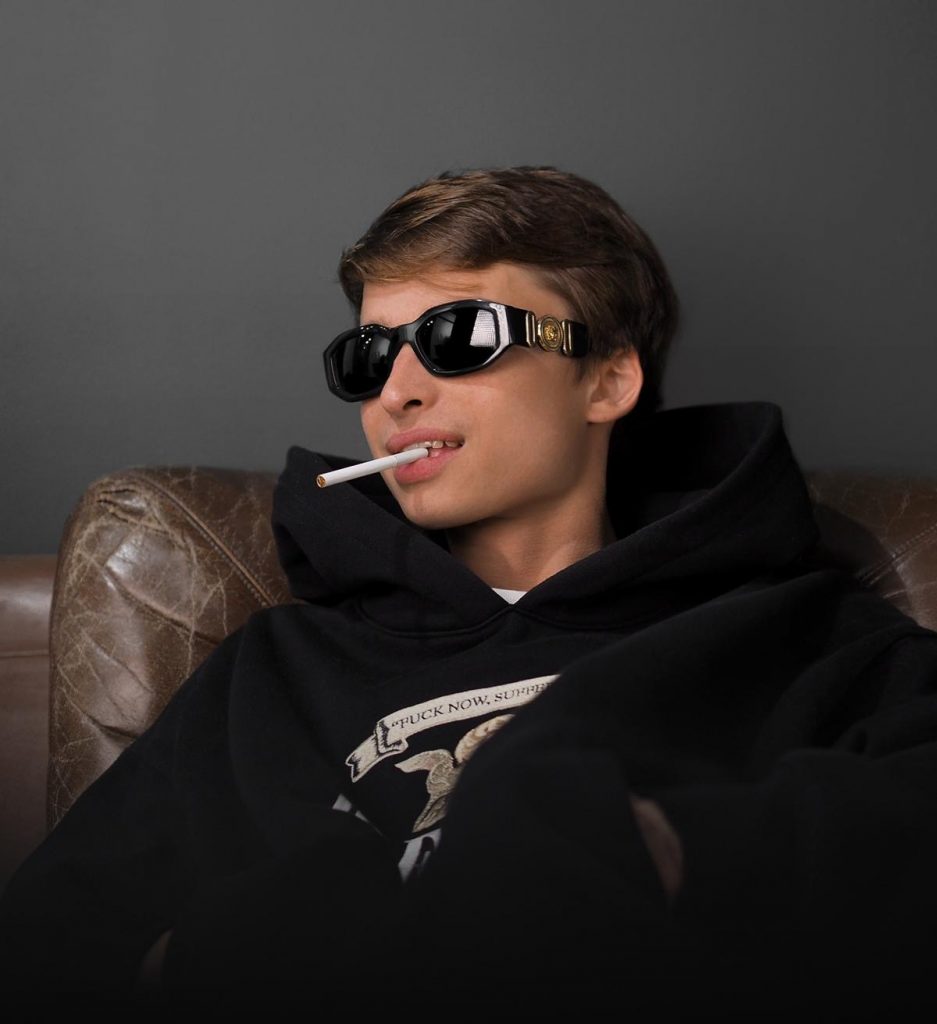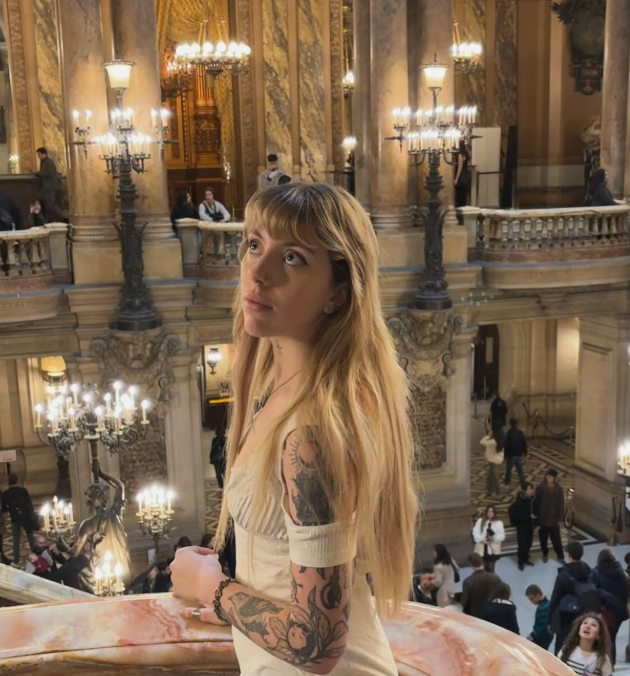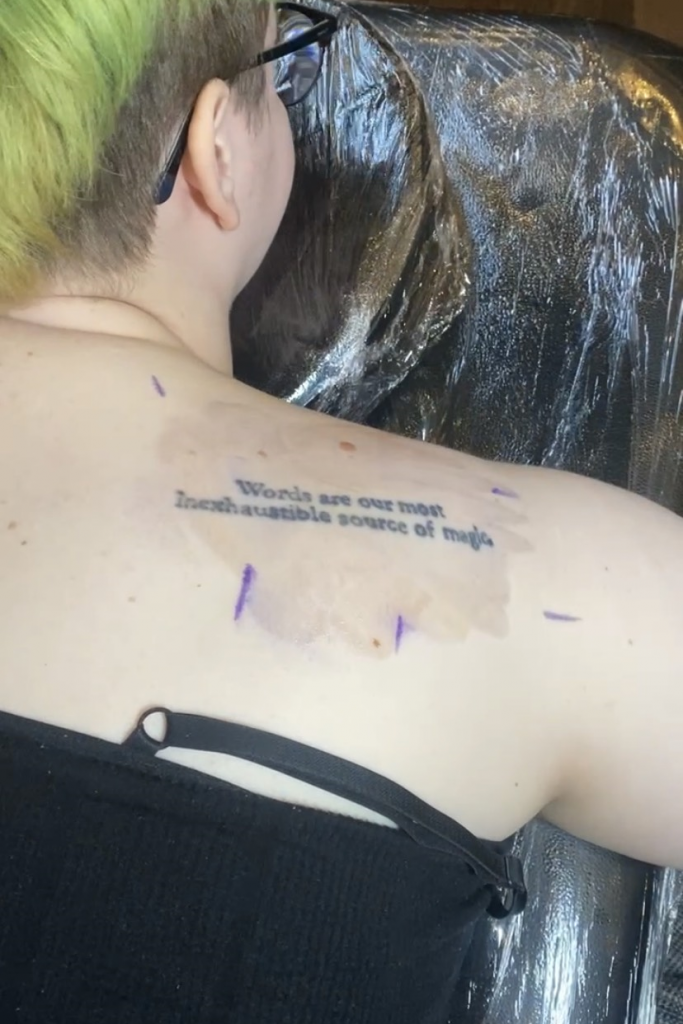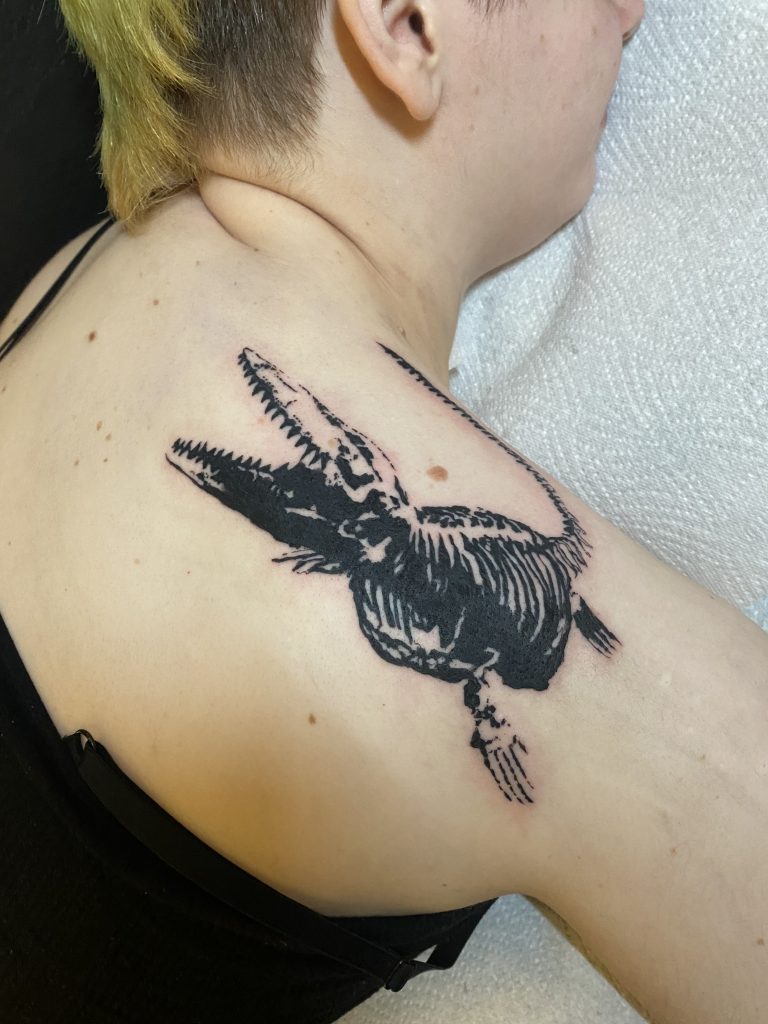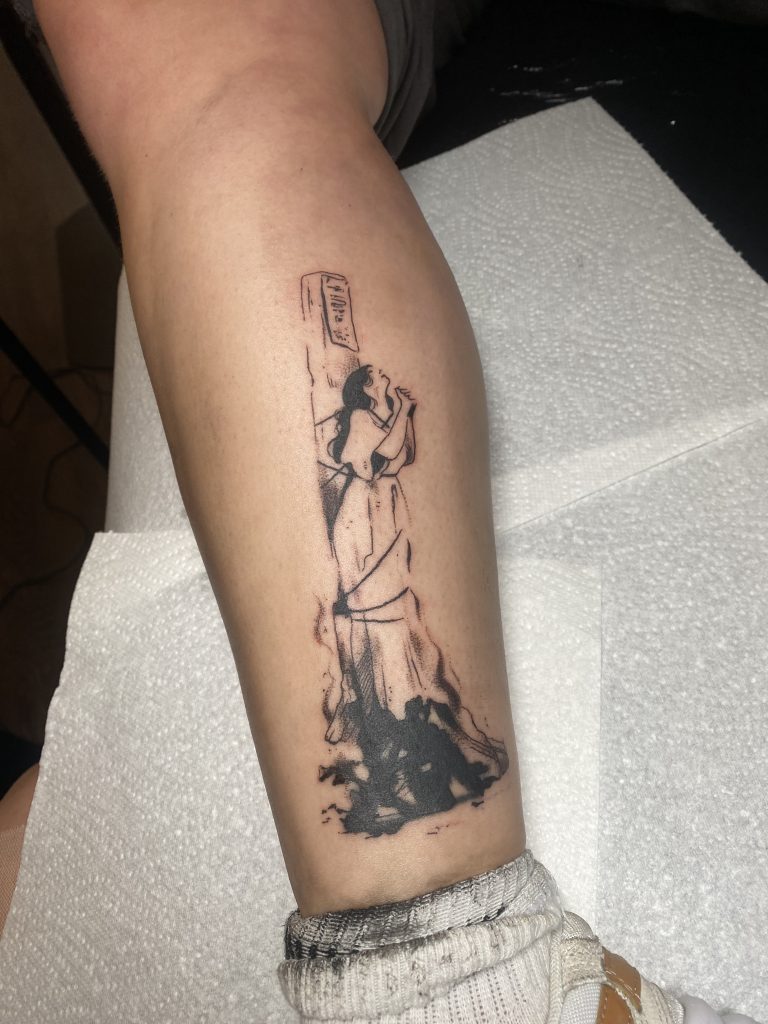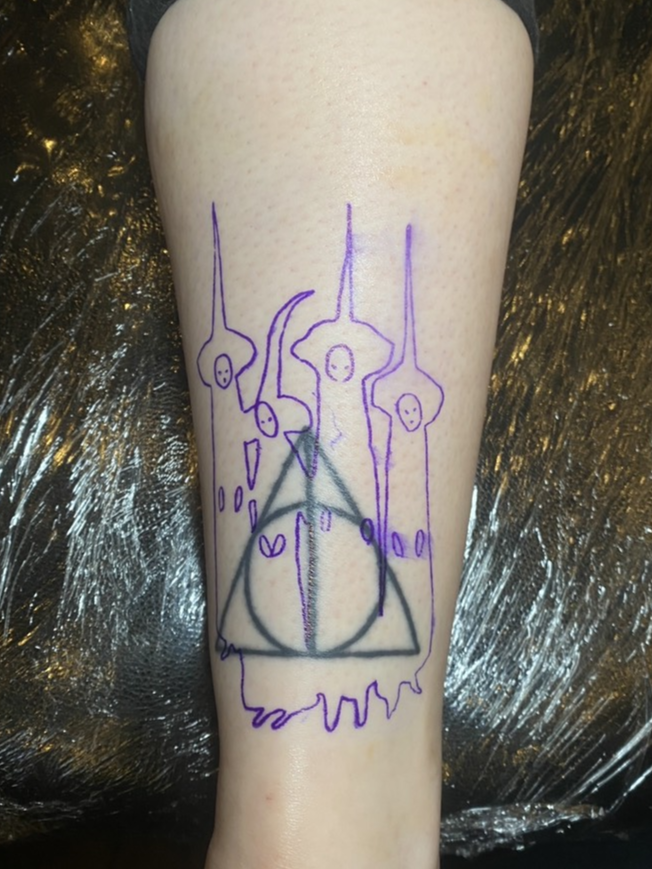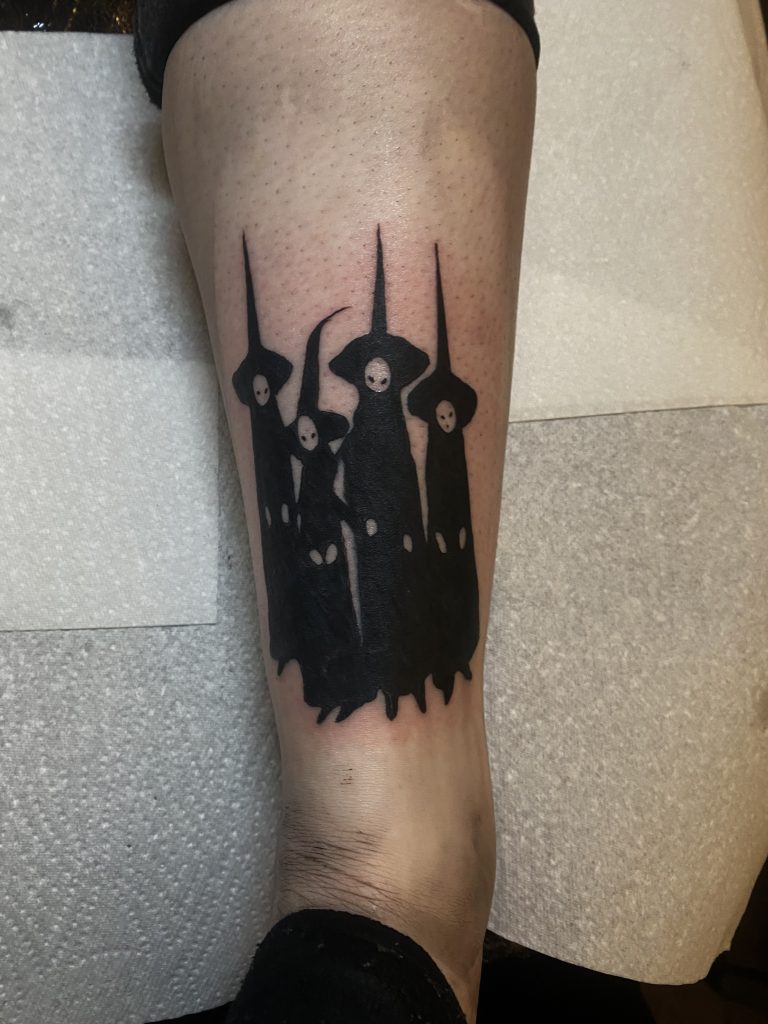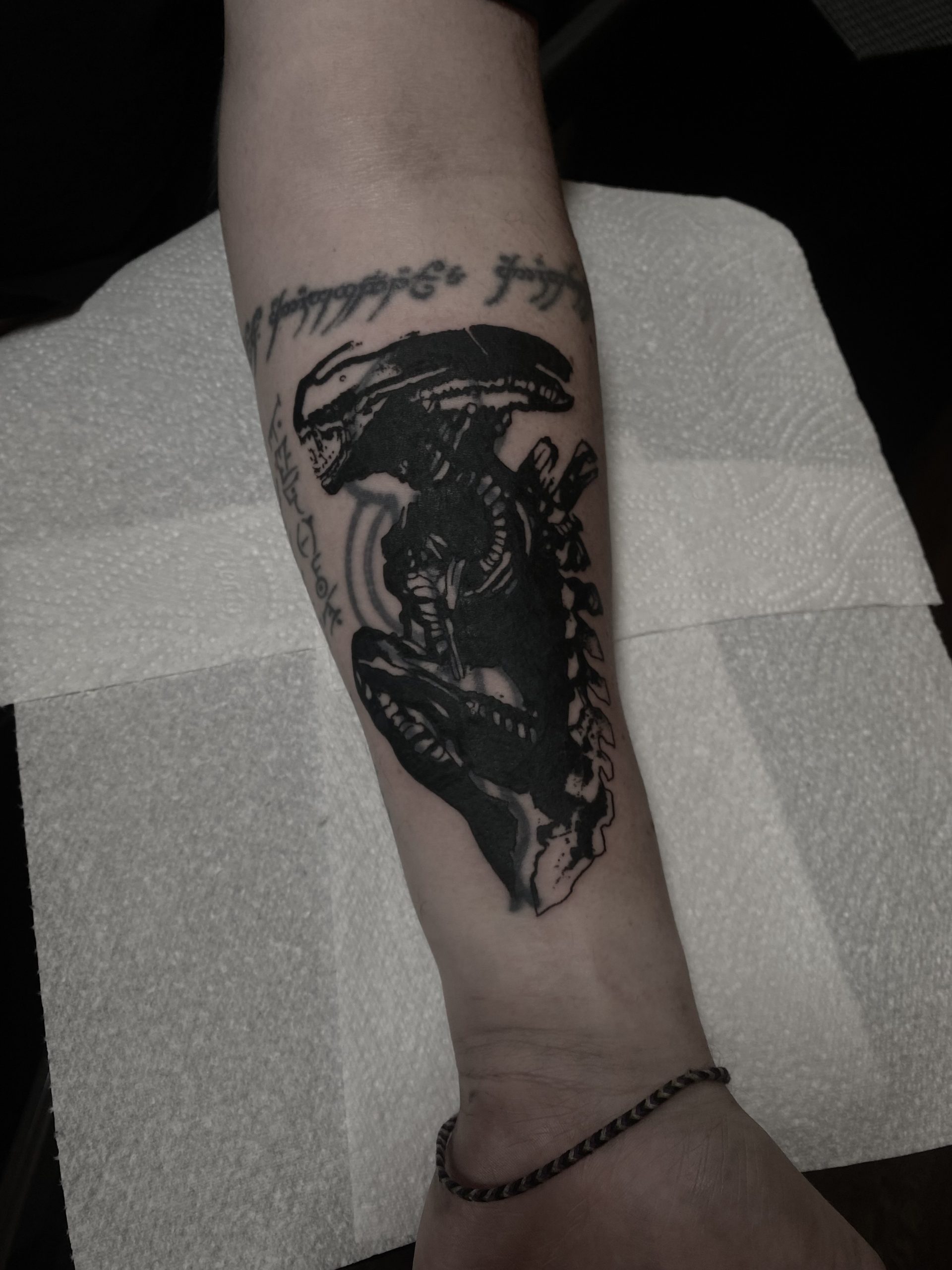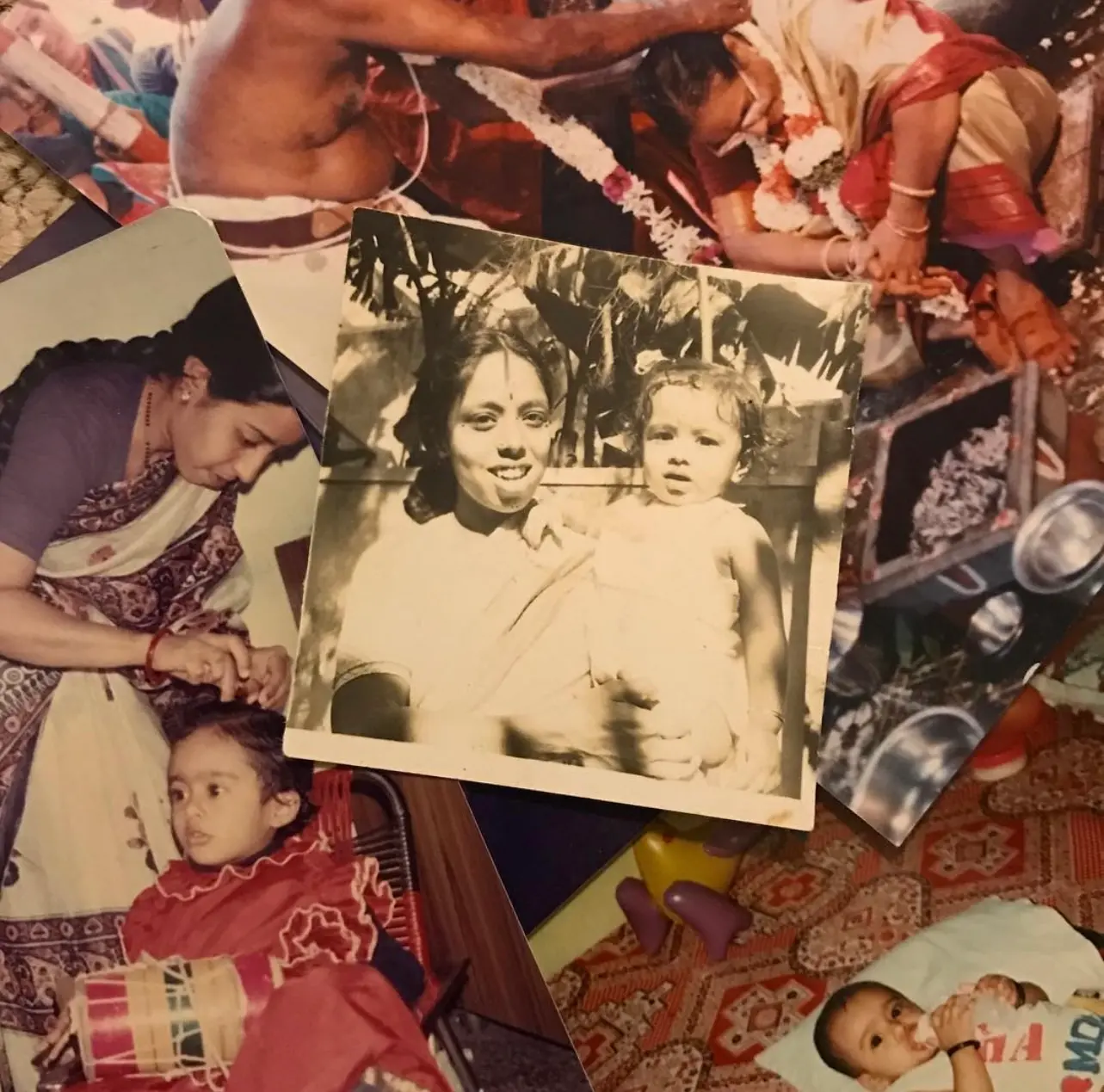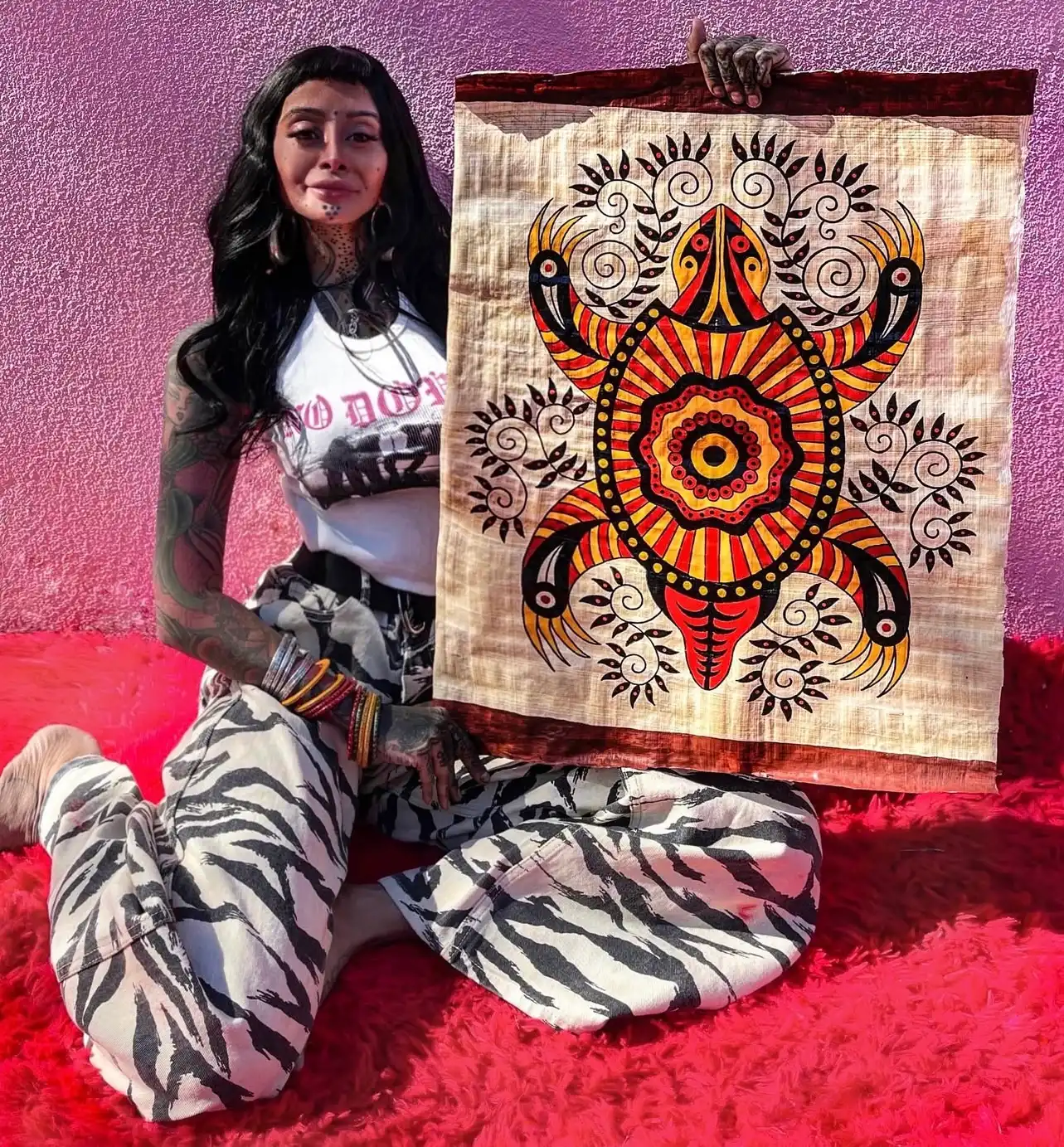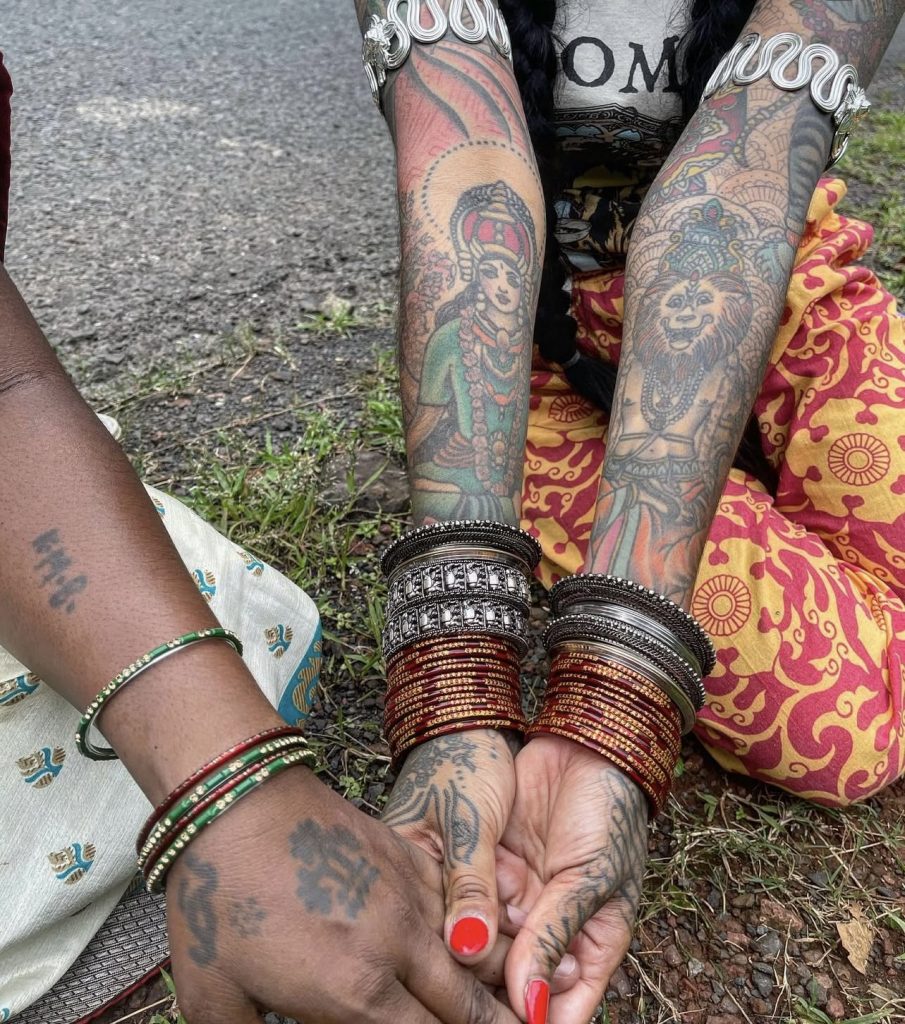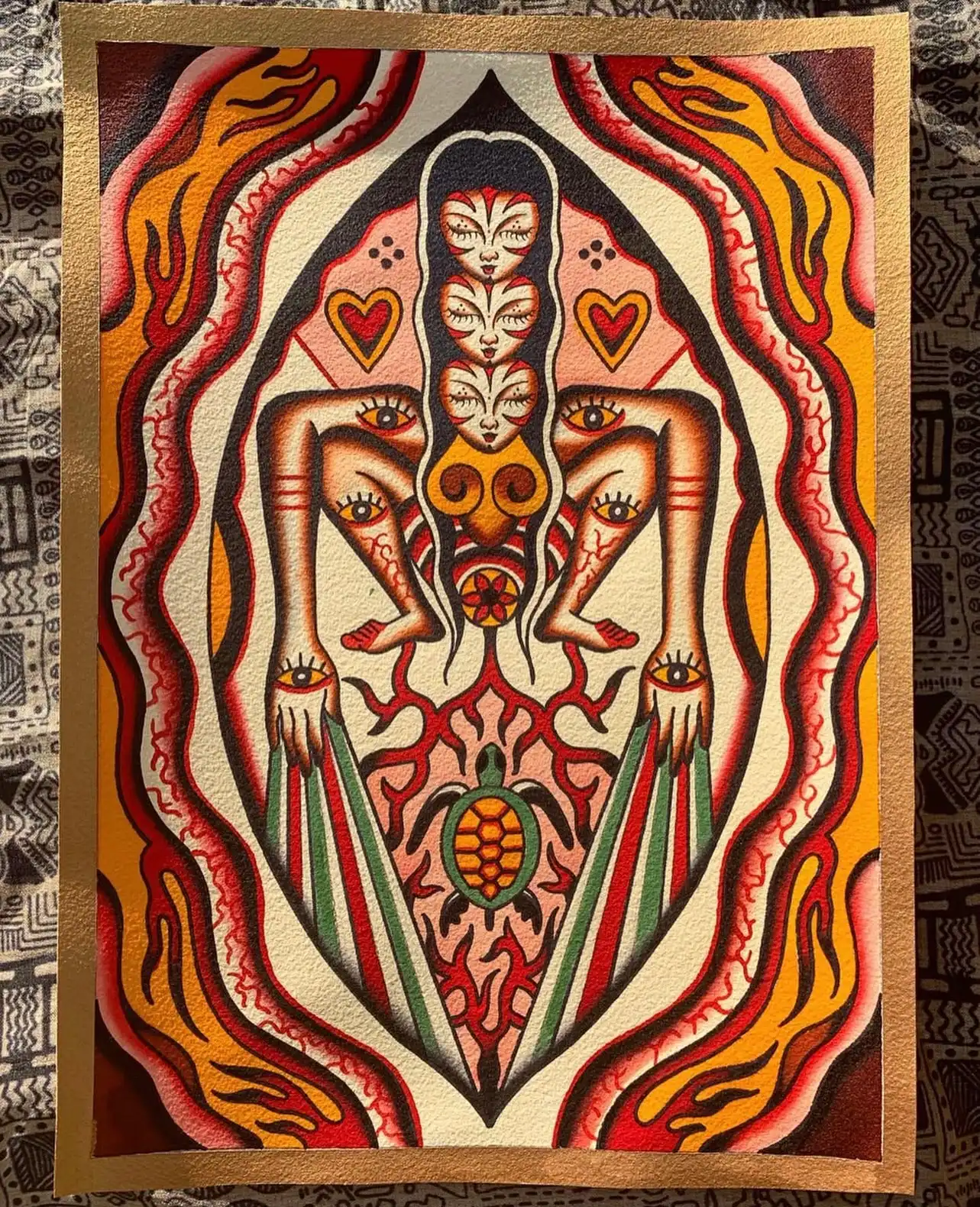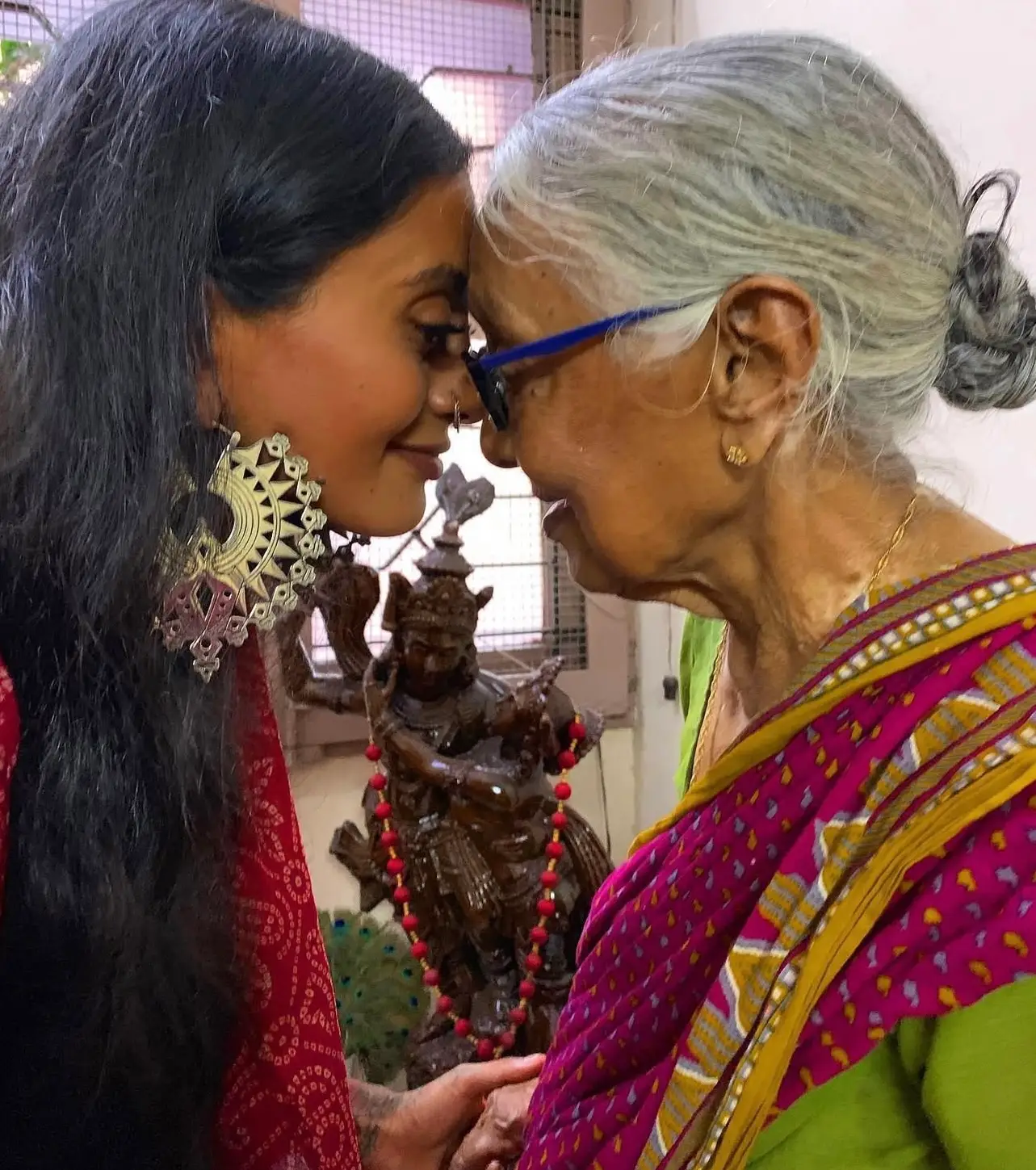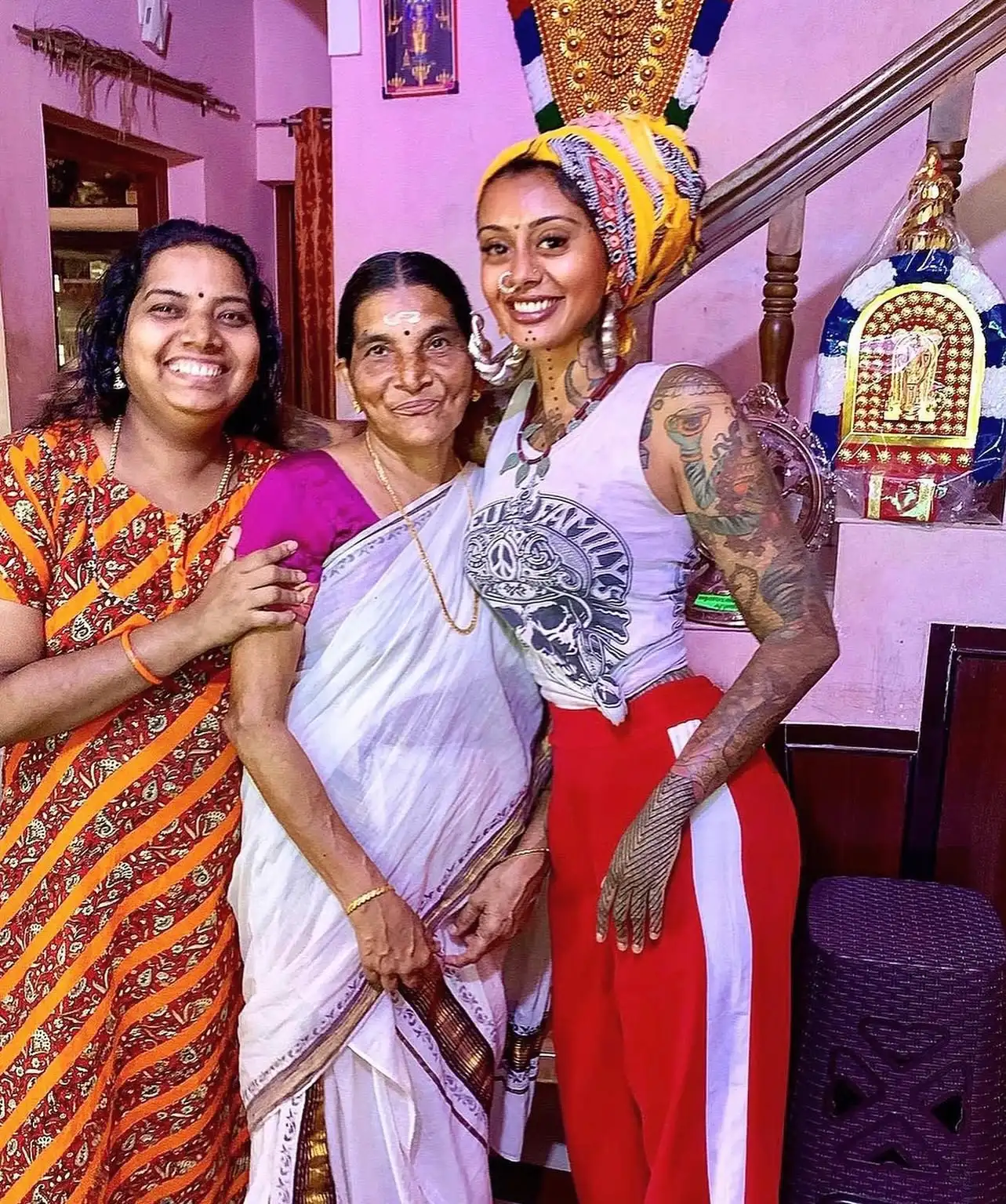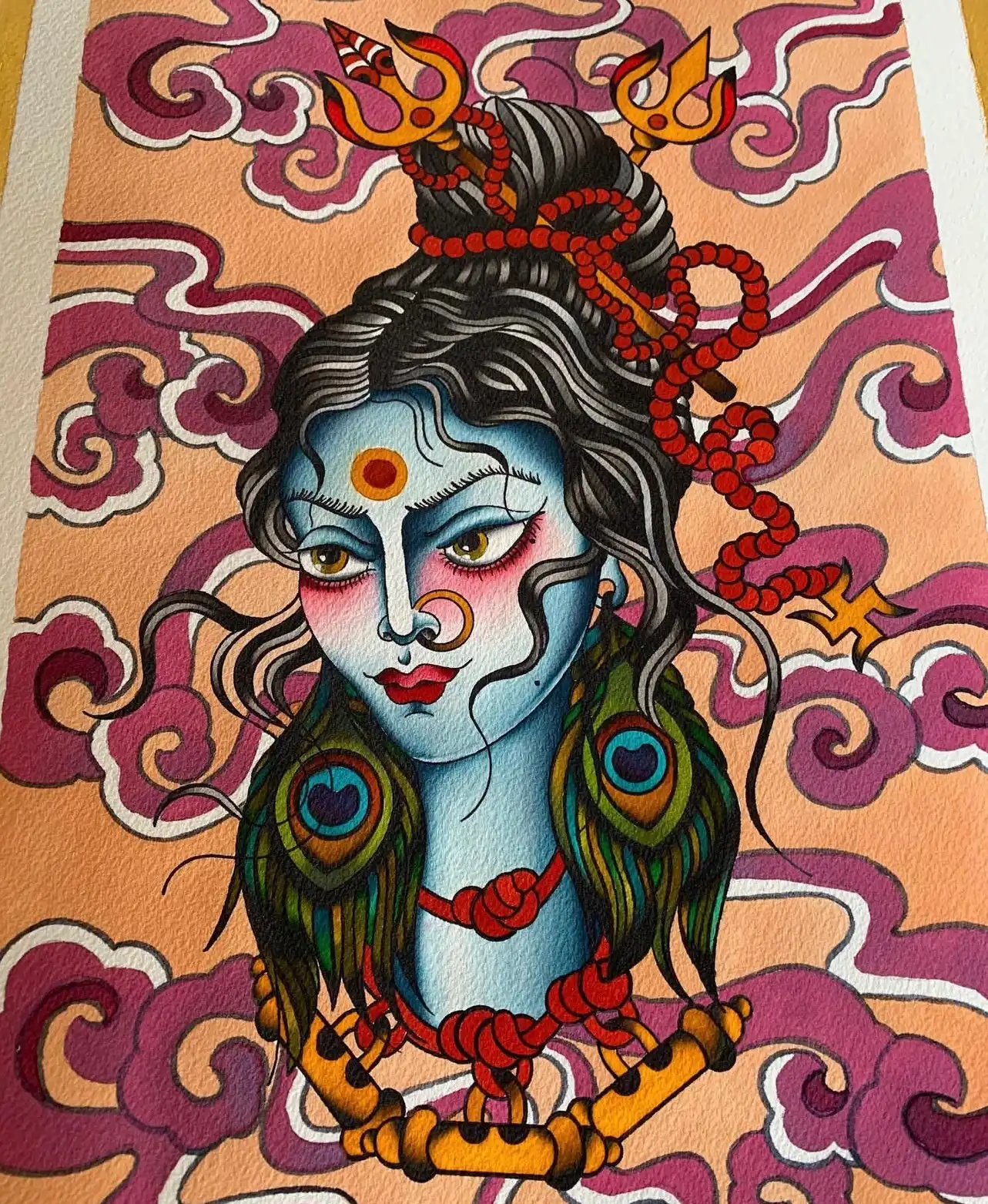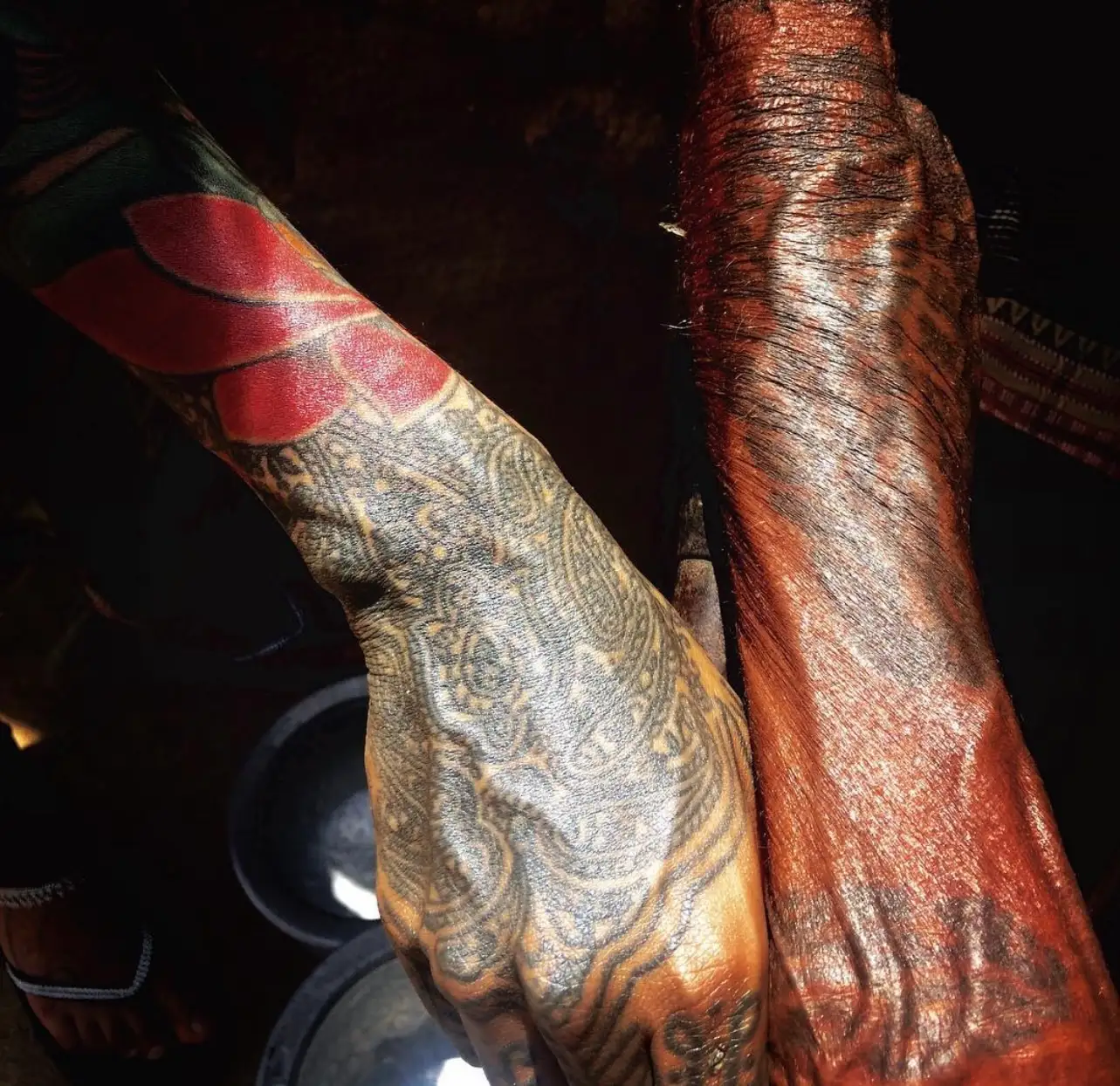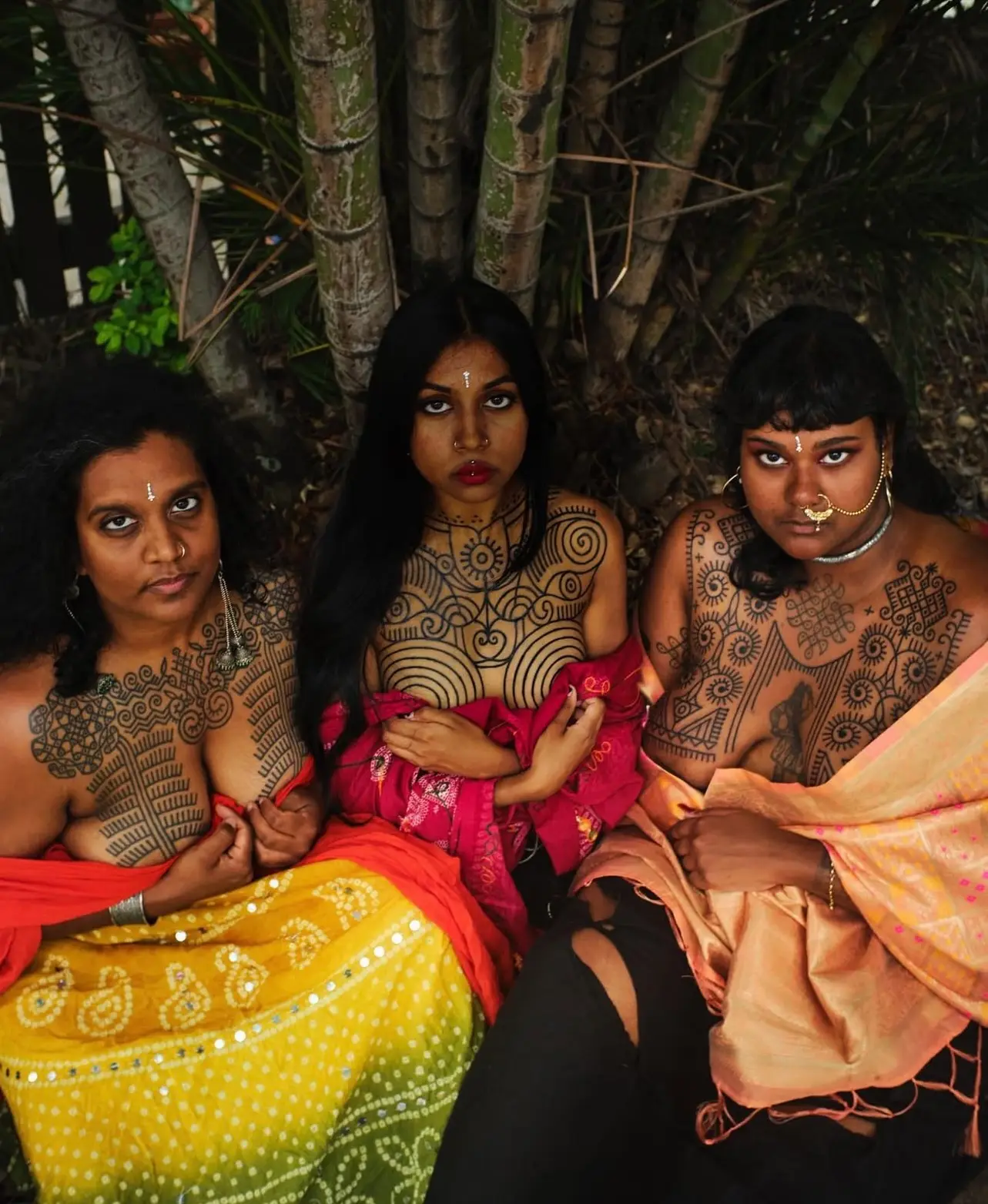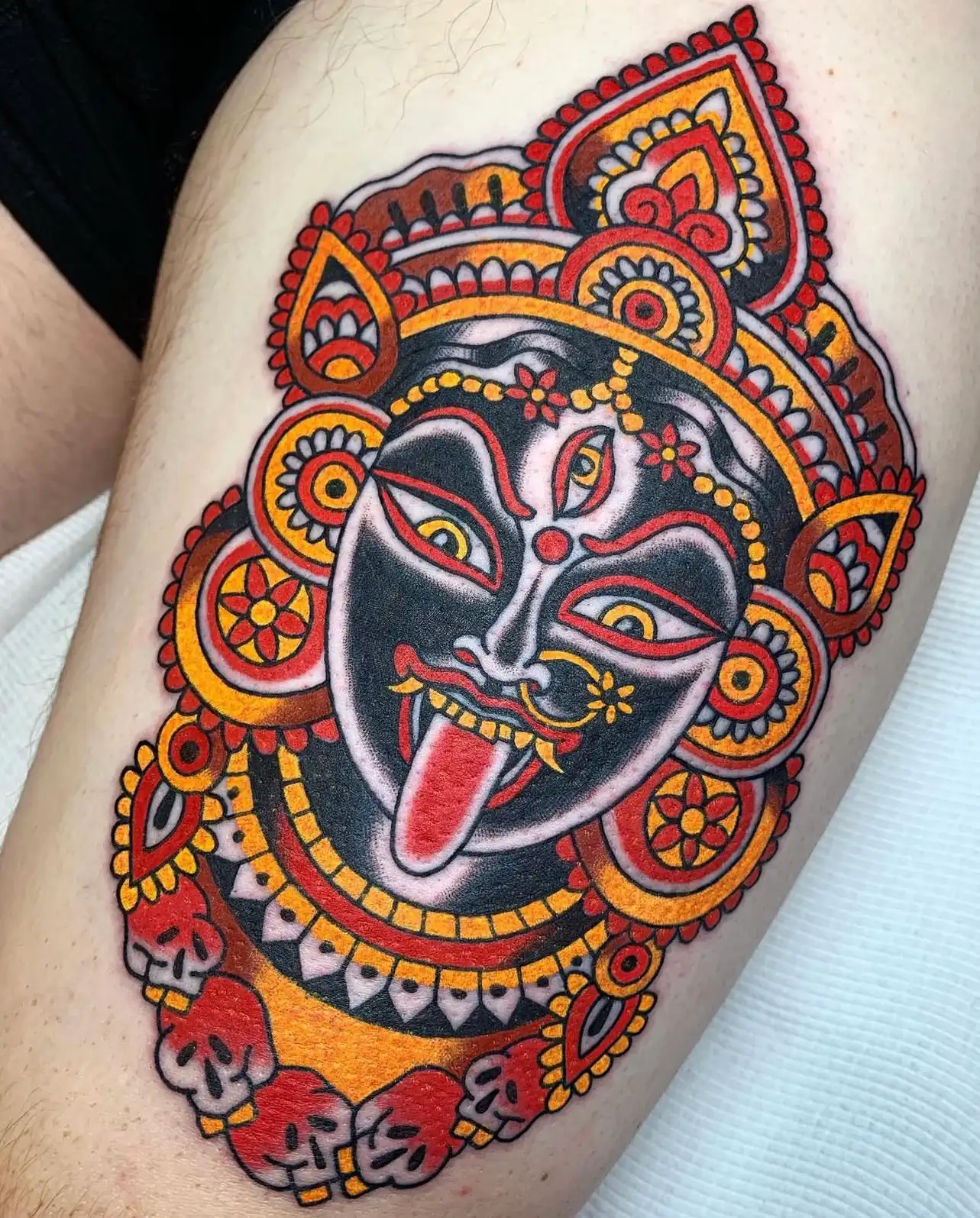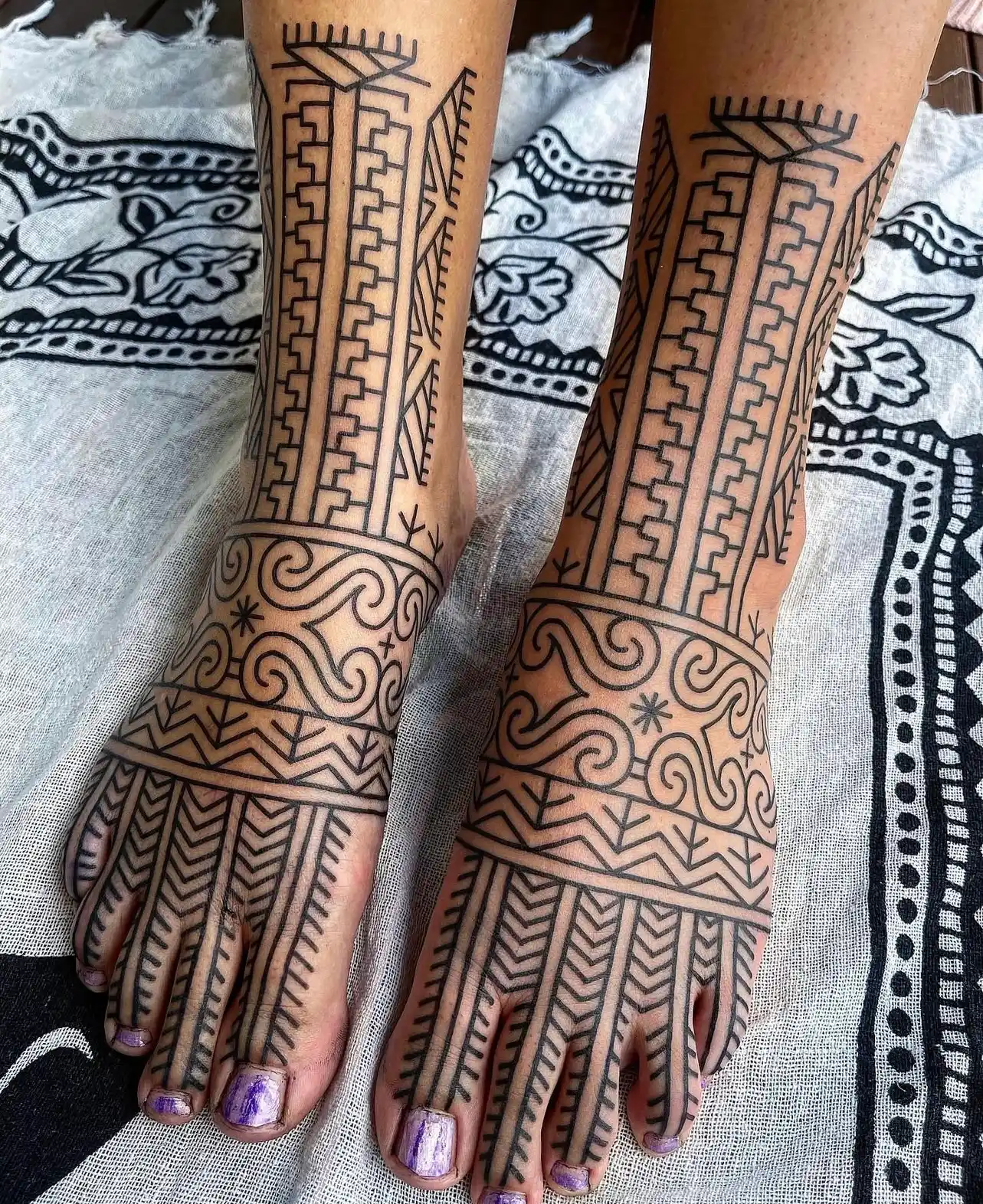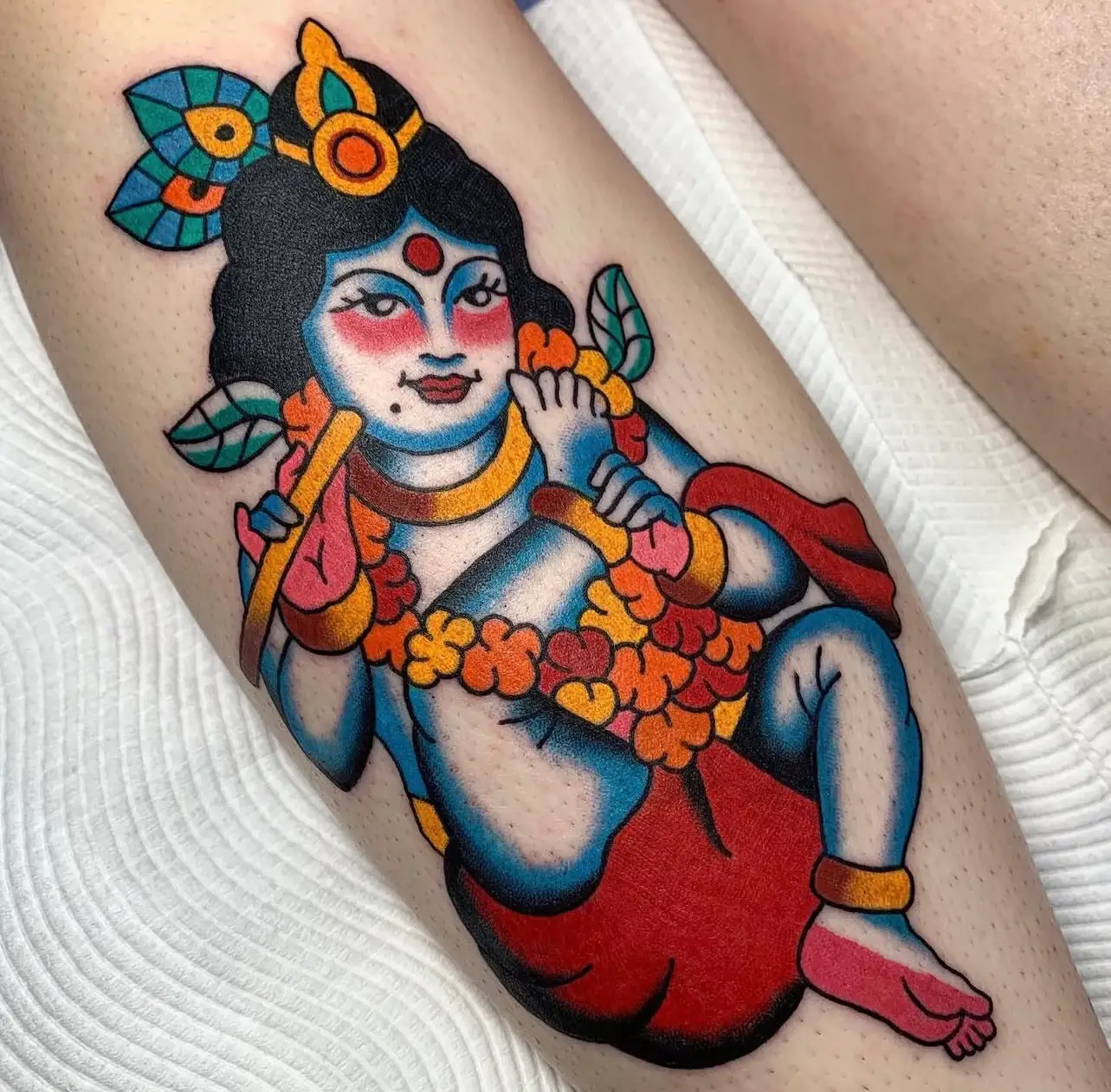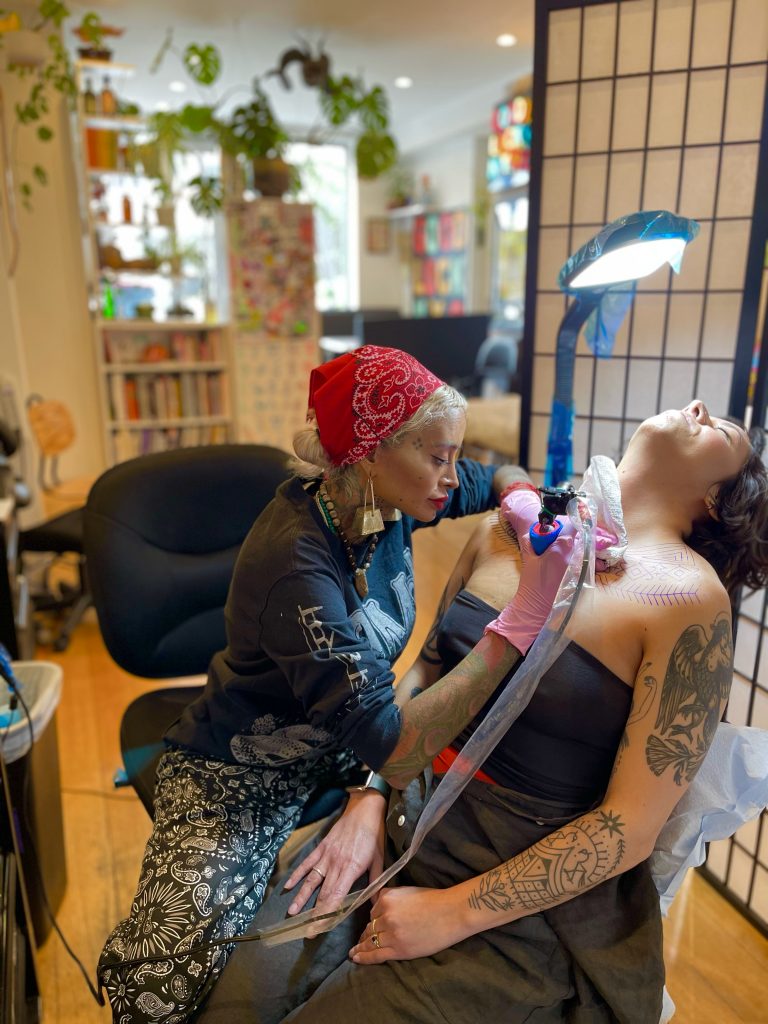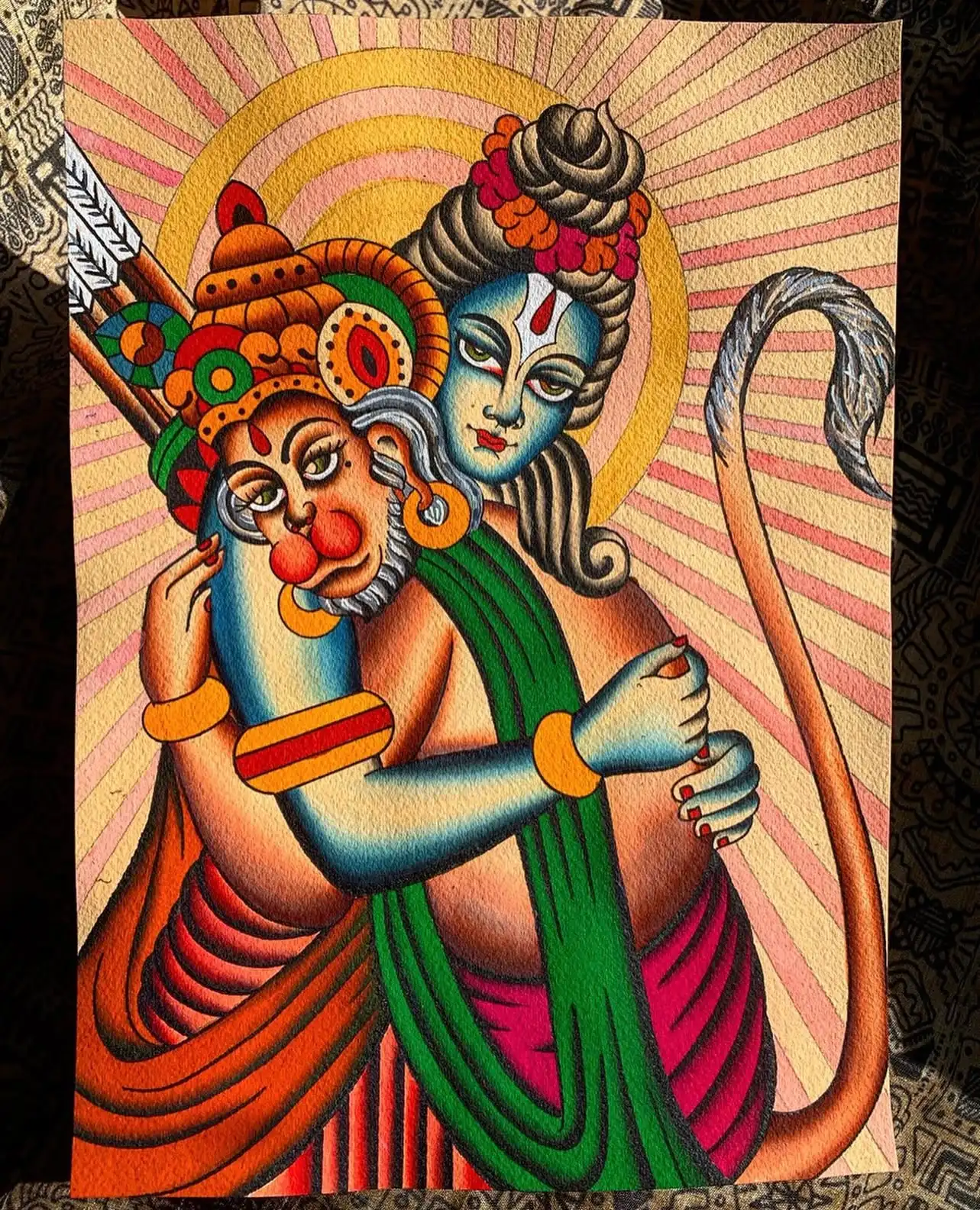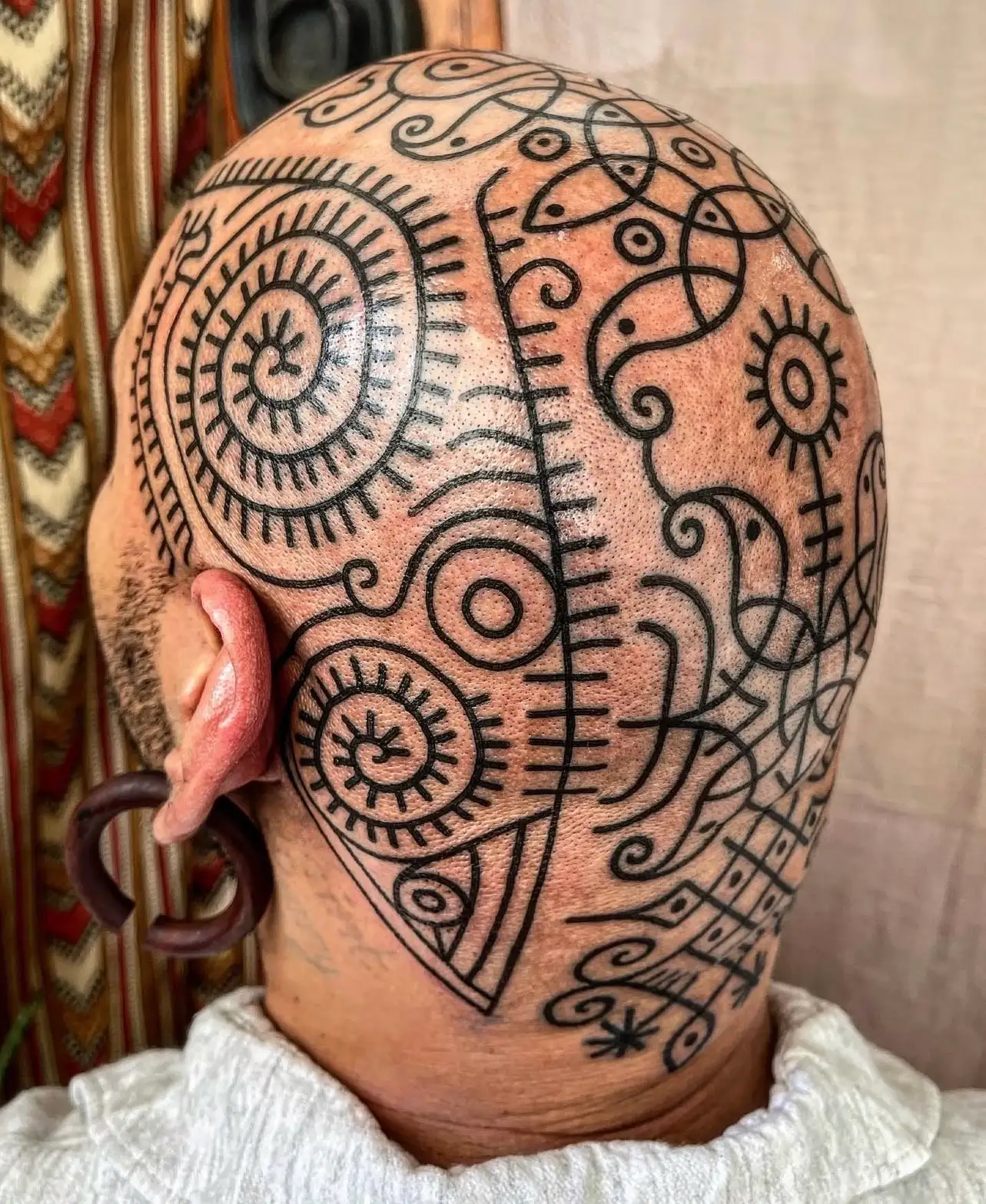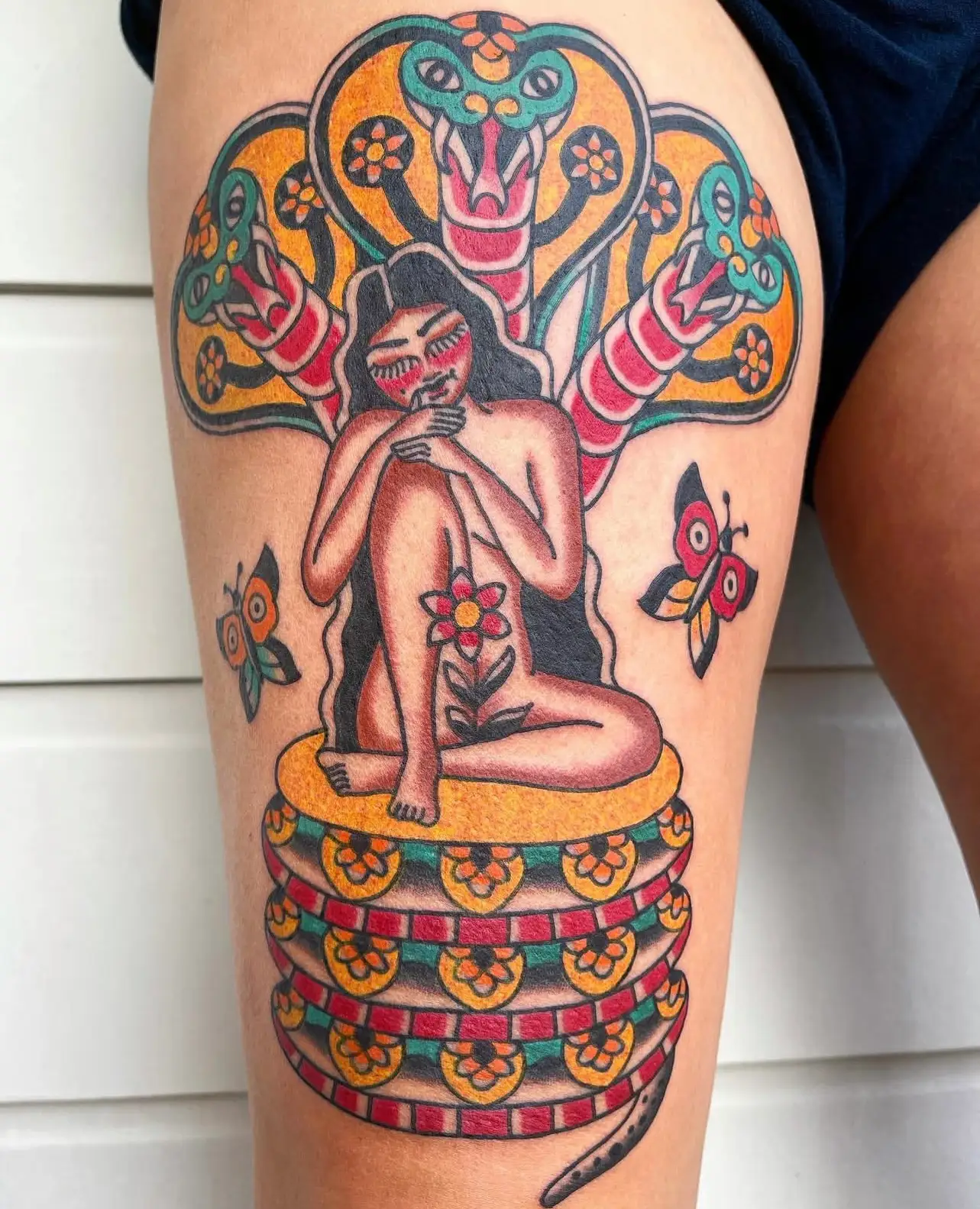Tattoo artist Kseniia Oliinyk (@storm_tattooart) believes that tattoos can be integral to healing both physical and emotional wounds. She used to be a nurse in Ukraine, and now she is tattooing in San Francisco in the USA where she covers scars and heals souls…
What drew you to the tattoo world?
The freedom of expression. How people can express their inner world through tattooing, tell their story or capture important moments in their lives. How a tattoo can help heal a heartache or remind you of what’s most important. To me, a tattoo isn’t just a drawing, it’s a whole story.
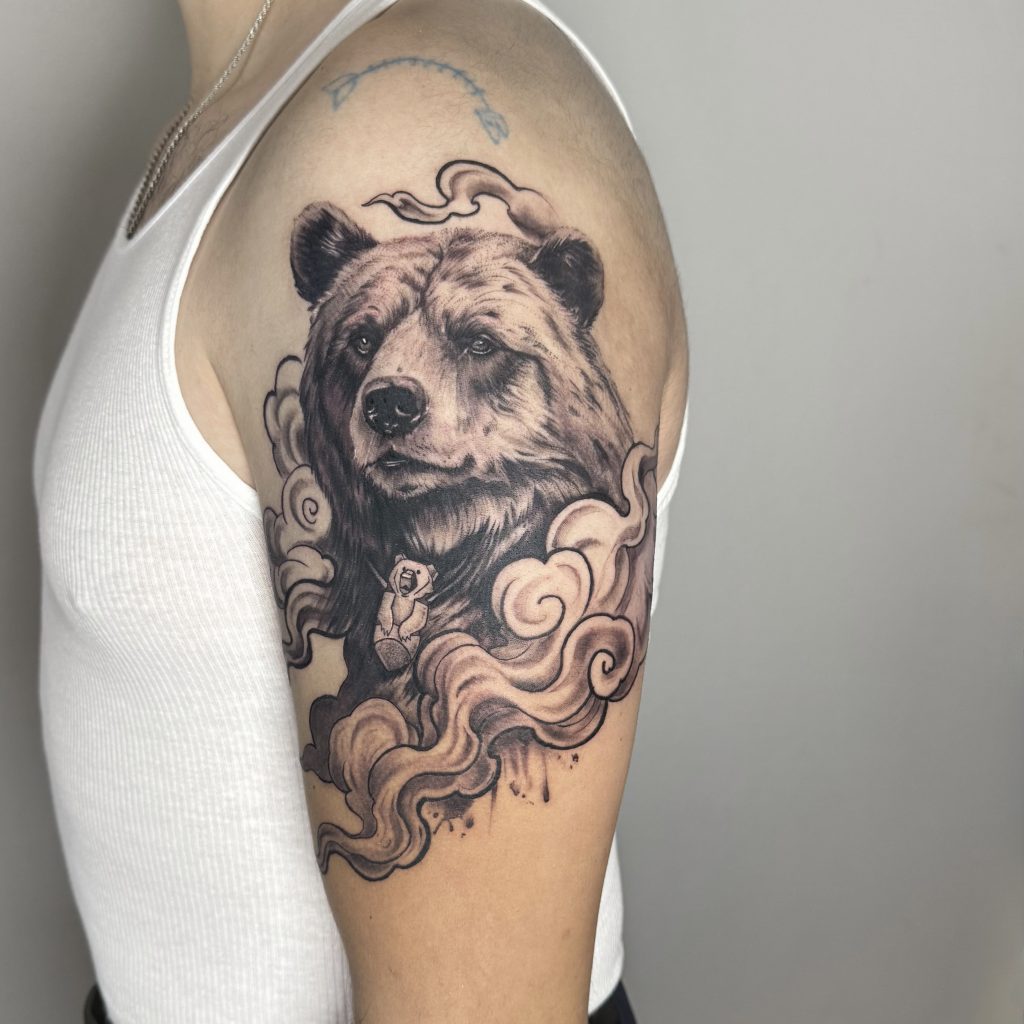
What made you want to become a tattoo artist?
Watching the TV show Miami Ink. I realised it was a place where I could combine my love of art and medicine because I wasn’t willing to give up either of them. Also I sensed a kind of freedom in this business, knowing that in art you are never limited and you have endless possibilities for development.
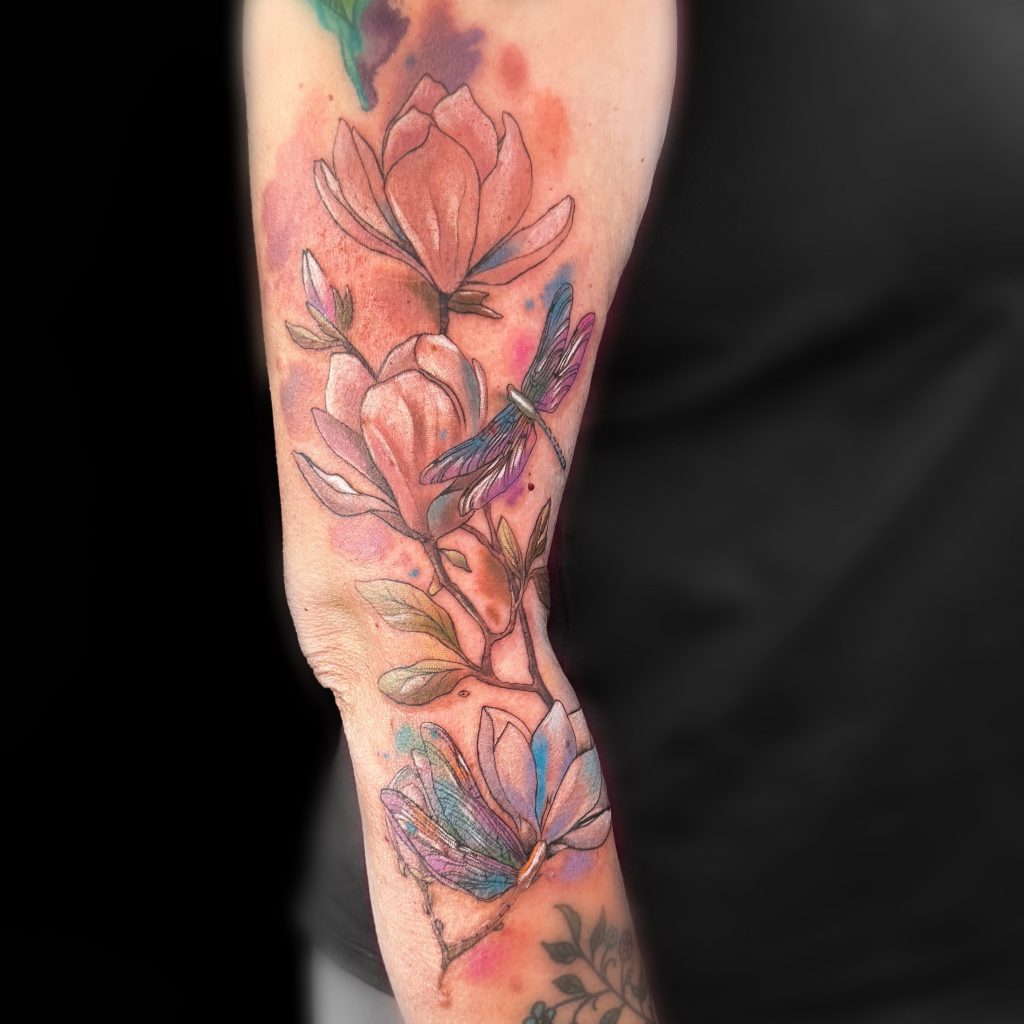
You used to be a nurse, how do tattooing and nursing relate to one another?
Yeah, there are no ex-medics. Tattooing is partly a medical procedure, we still work with the skin, which is a full-fledged organ with its own peculiarities. As a tattoo artist you need to be ready for the client to feel bad at any moment and you can’t hesitate to deal with it. Also healing is fifty percent of the quality of the tattoo, so the right aftercare is also very important.
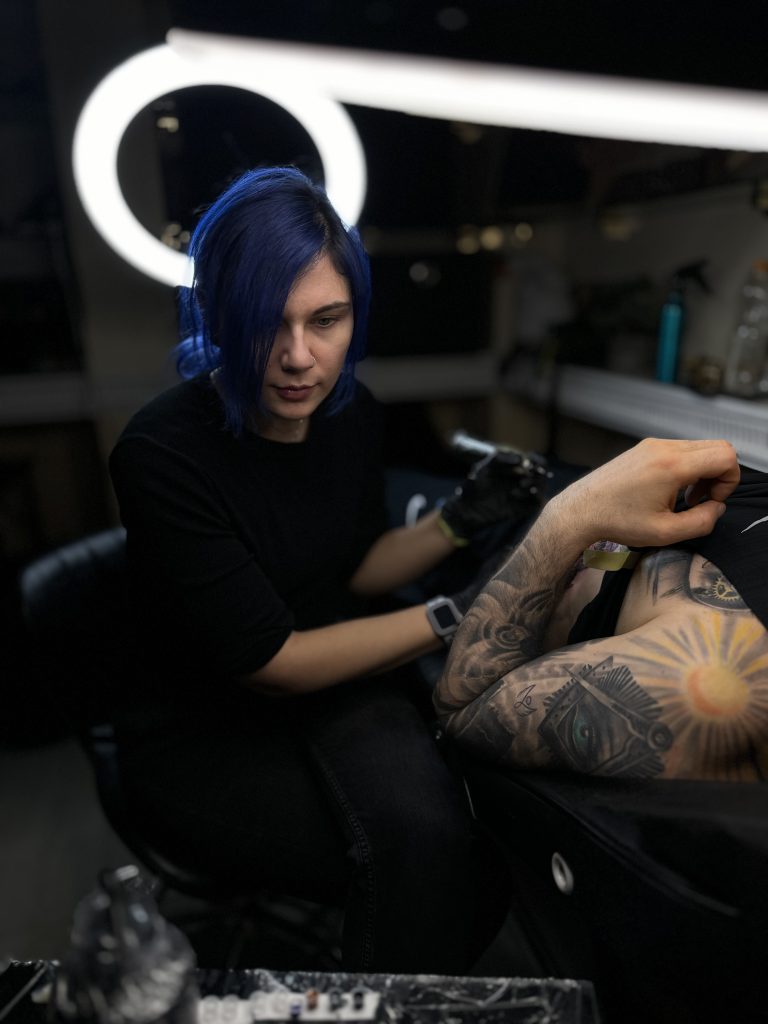
What was your first tattoo?
A white snowflake on my right palm. I am left-handed and made it myself. Later on the tattoo was also practiced on by my apprentices, as a first touch of live skin. Now it is perfectly healed and for seven years I have not done any touch-ups.
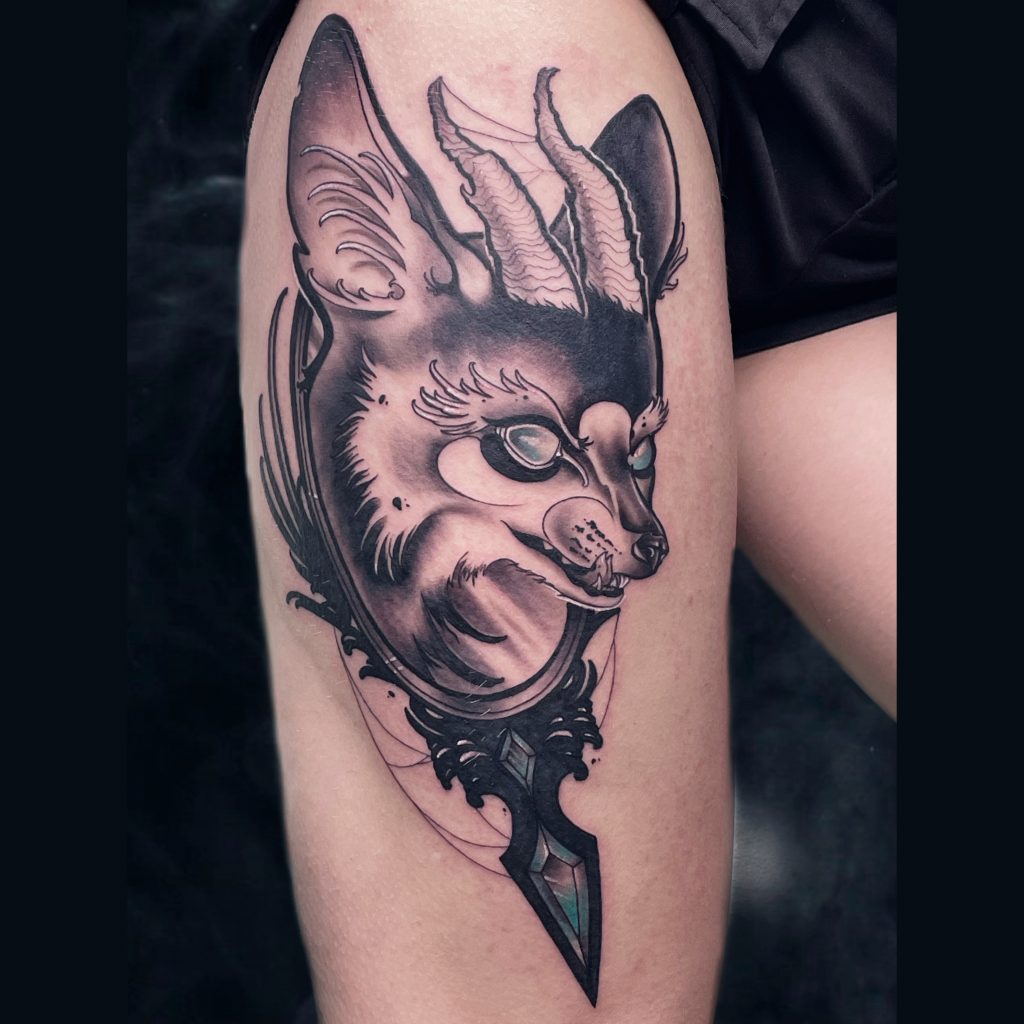
What was the first tattoo you did on someone else?
The first tattoo I did on a person was a blackwork sleeve for my first tattoo teacher. At my first class I was given a machine, needle and ink said, “tattoo me”. I was shocked, but I was up to the task.
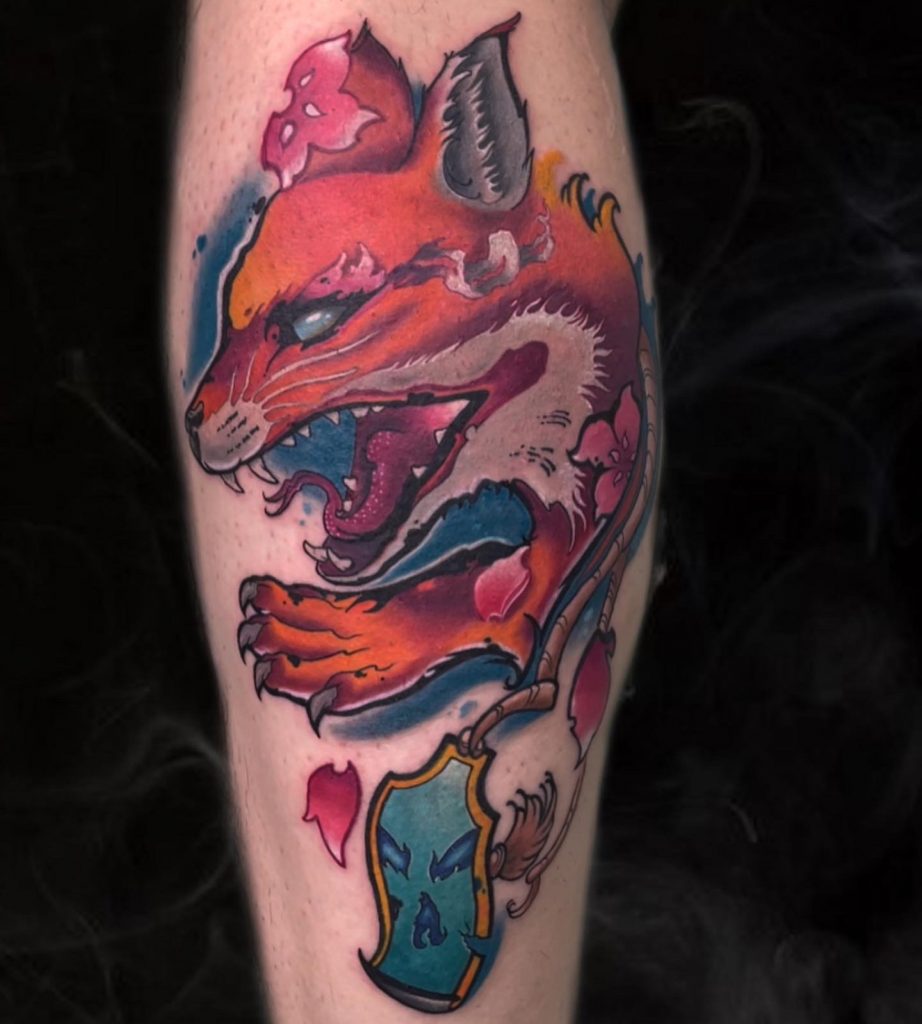
As well as your first class, how did you learn to tattoo?
I had two mentors, they gave me the basic knowledge, led me through the gates of the world of tattooing, and then I went on my own. I studied other artists through video lessons, practiced on artificial skin and continued to draw a lot – very quickly I moved to the real thing. I still attend different workshops of the artists whose style and technique I like the most. There is no point where you’re the best; you can always get better.
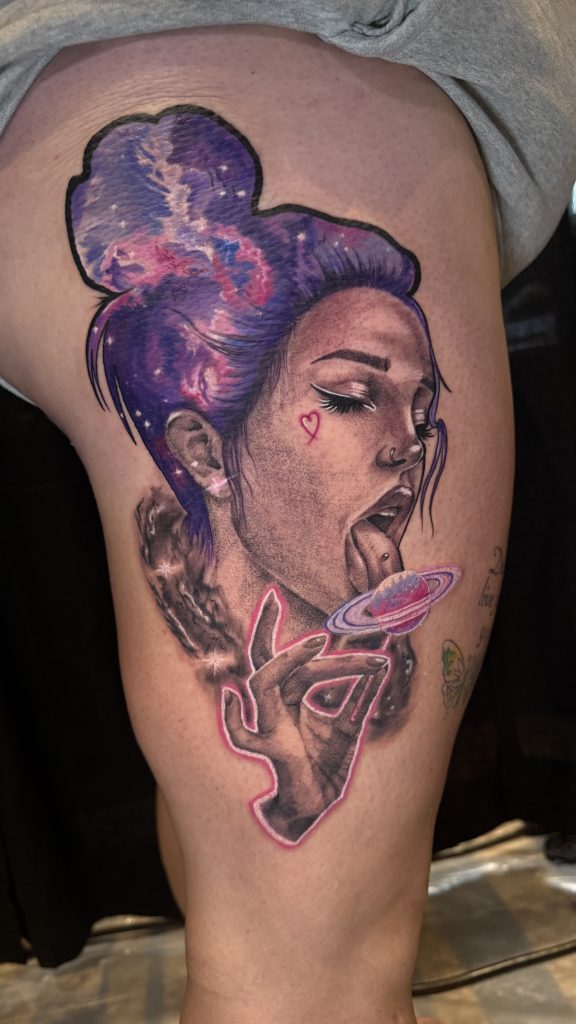
Do you have a favourite tattoo experience?
There is no single favourite. I adore my clients and their ideas, especially when I am given freedom and told to “create, I trust your vision”. Those are truly the best moments, seeing a client’s eyes shine when they walk out of the tattoo studio happy.
Do you think tattoos can help people feel more confident?
Yes, I absolutely believe that. Expressing your thoughts, feelings, the way you see yourself and the way you want a tattoo. It’s magic. Especially when it comes to covering up old tattoos and scars.
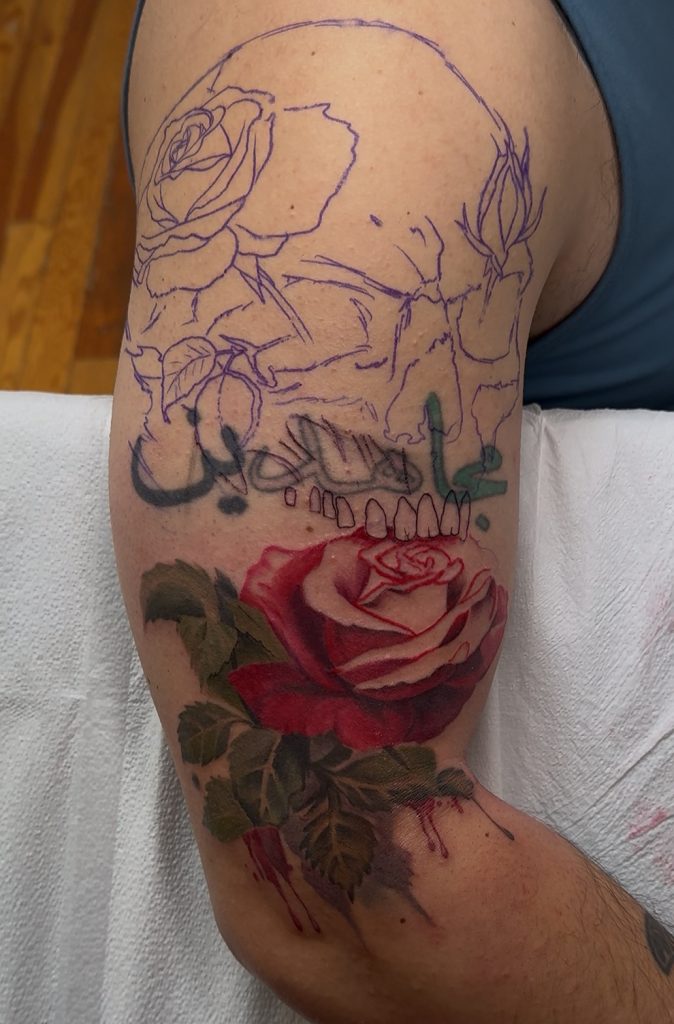
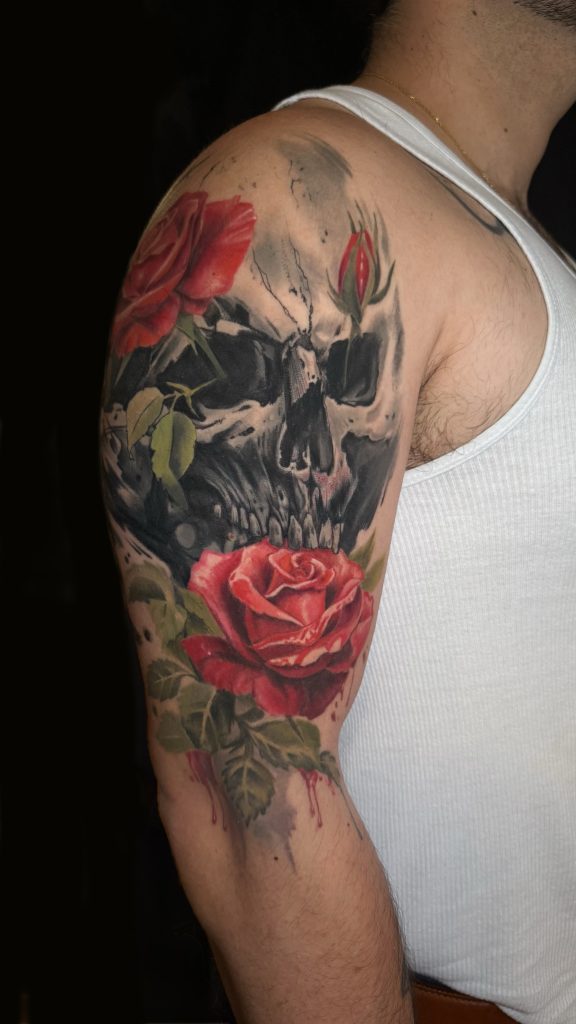
Can you tell us more about covering up scars with tattoos?
It’s a very special subject. I would even say it’s tattoo therapy. Because scars have a significant impact on self-image, love for your body and the way you feel about yourself in your body.
If a person is not happy with what they see every day in the mirror, it can lead to terrible consequences. A person can become more closed-off, shy and constantly feeling ashamed of their body can significantly reduce the quality of life. Now I’m co-authoring a scientific article with a psychotherapist about it. This is an important topic that I believe we should not keep silent about.
How do you cover a scar and what should someone who wants one covered know?
Scars are basically connective tissue, like our joints. The quality of the skin is really different, so I wouldn’t recommend using this method for any fine lines or small details. I think the best thing to do would be to cover the scar with some part of the tattoo and draw attention away from it.
So, for instance, if you want to make a tattoo that’s all about drawing attention to a particular object, you can do that by making the object itself a bit distorted or something like that. It was great to work with a client who had a big burn on his arm. We covered it with an abstract tattoo.

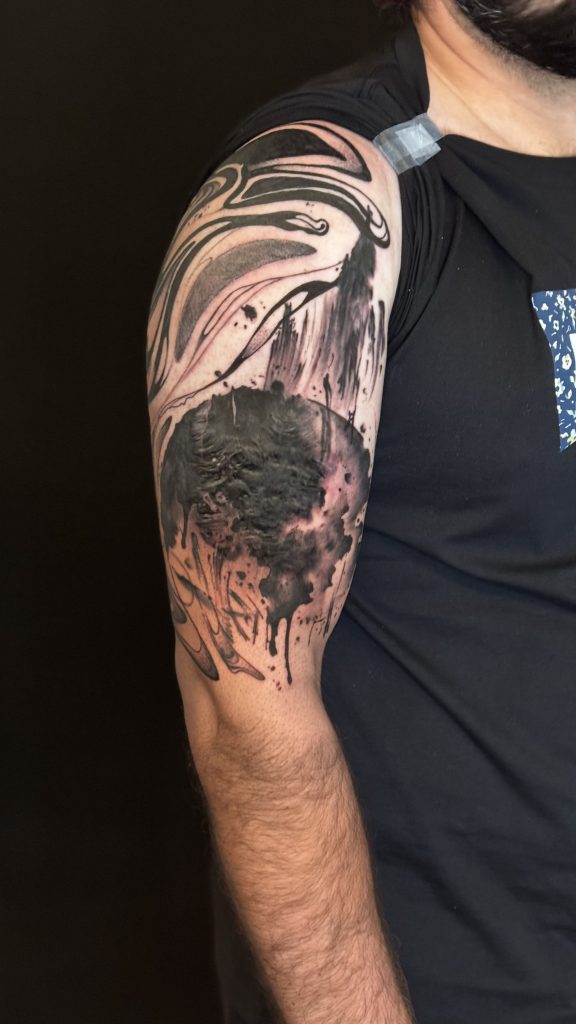
The watercolour texture and shapes of the scar really complemented the composition, especially where it’s actually made.
It’s also worth mentioning that the age of the scar is important. You can overlap the stitches a year after the area has healed completely, as long as there’s no pain or discomfort. When it comes to keloid scars, I always make sure my clients see a doctor at the start of the project to check it’s ok for them to work on the scar.
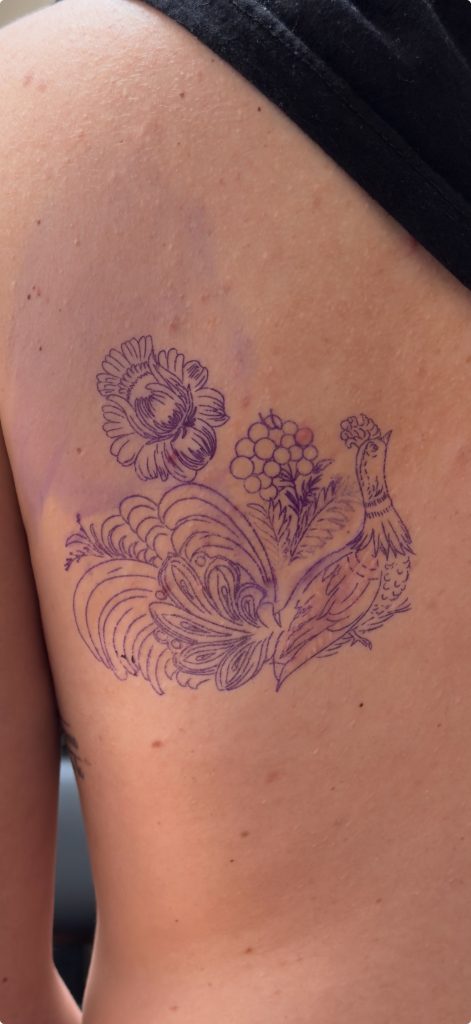
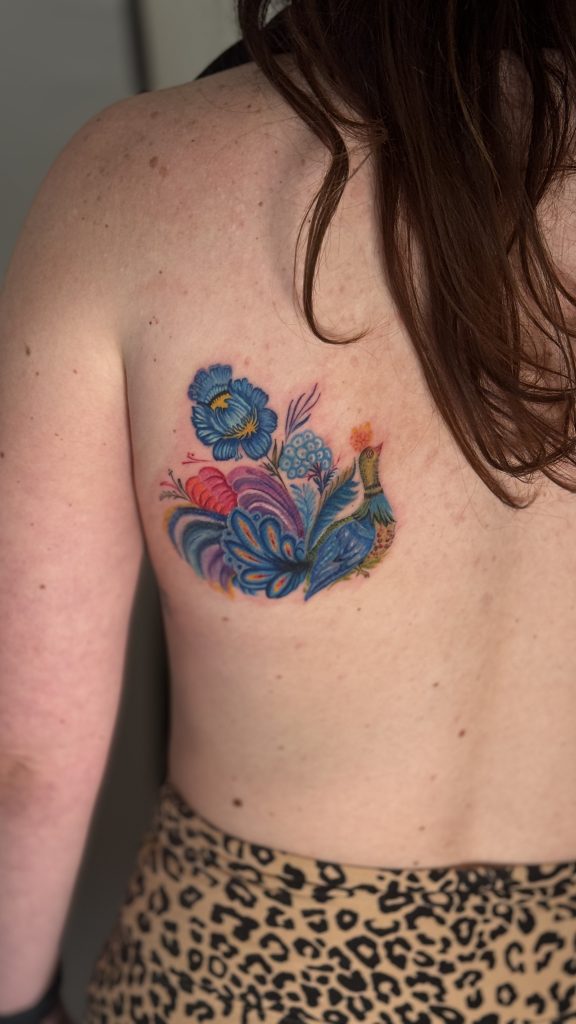
You have done a few charity tattoo flash days, what are these like?
These are my special days, and I love them. I started holding them at home in Odessa to support our defenders. There have already been three and there will be more. On these days, I do small, quick tattoos for a fixed price, and all the money raised is donated to volunteers to buy medicine and other necessities.
Next time, I think it will be to help an animal shelter that has taken in pets who have lost their owners.
I don’t create flash sheets because I prefer to work with my clients’ ideas. A few days before the event, we develop a sketch, so each client gets exactly what they want.
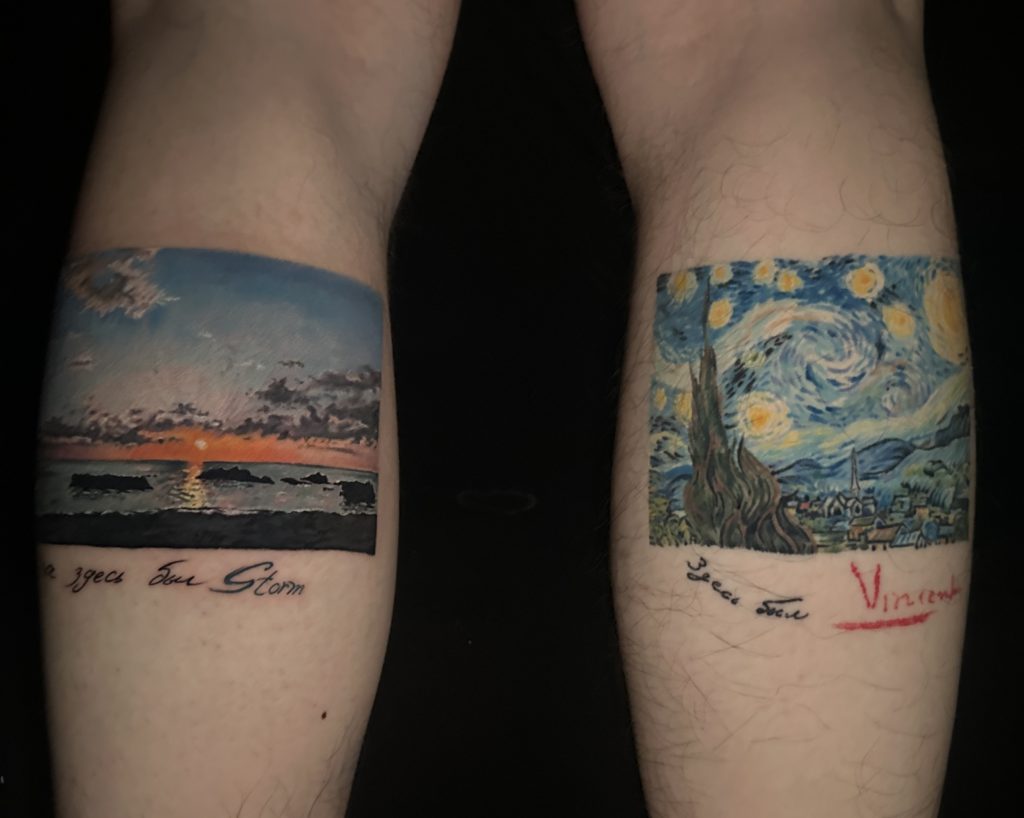
What’s been your favourite country to visit and tattoo in?
Currently, I am most interested in working in the USA and Ukraine, but I like to travel everywhere; the main thing is to plan everything so that I don’t ruin anything at the last moment.
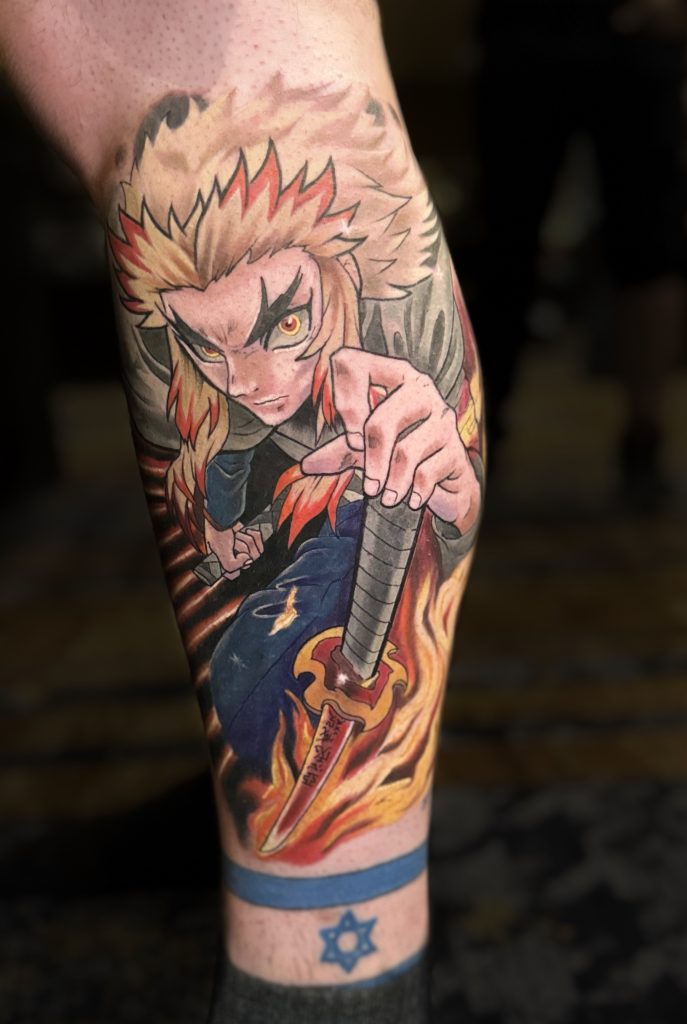
Do you have a moment in your career or personal life you’re really proud of?
I was probably at my happiest when I visited a tattoo convention for the first time and took second place in the “Neotraditional” style. That was in Kharkiv in 2021 — it was truly unforgettable. I also saw this wonderful city for the first time then, and I would really like to go back.
I’m also really proud that I overcame my fears and started travelling the world, tattooing wherever I go and meeting incredible people who inspire me more and more.

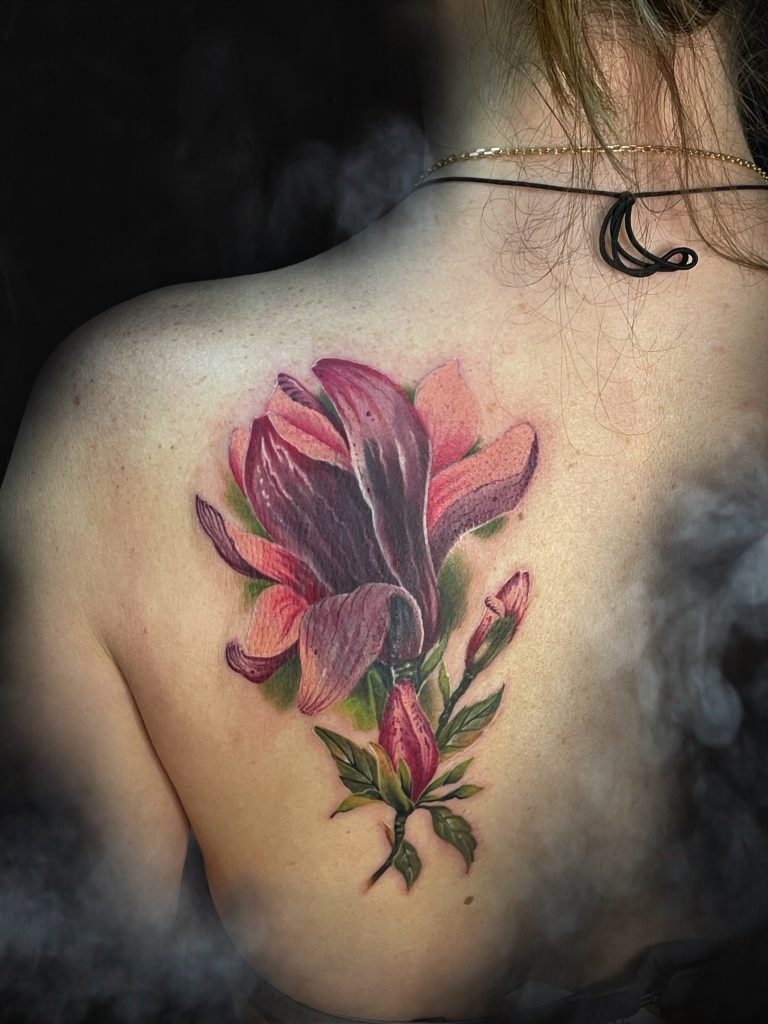
What are your hopes for the future?
I have big plans. I want to open two tattoo studios: one in the USA and one in Ukraine. There is a list of tattoo conventions that I’d like to attend. I am also thinking about setting up a charity project for scarred people, inviting different masters who work with scar camouflage and promoting tattoo therapy.
We can’t wait for the next step in your journey. Follow (@storm_tattooart)
